

Tidewater Times January 2025



COOKE’S HOPE

Between Easton and Oxford: Exceptionally well-designed 3,150 sq ft 3-BR, 3.5 BA home features wood floors, high ceilings, bright spacious rooms, downstairs primary BR; outstanding kitchen w/new Wolfe gas cooktop and Cambria countertops, double-sided fireplace; private office, living room w/custom cabinetry and a glassed sunporch overlooking the fenced yard w/brick patio & pergola. Attached 2-car garage w/bonus room above. NEW LISTING!





















Tidewater Gardening K. Marc Teffeau




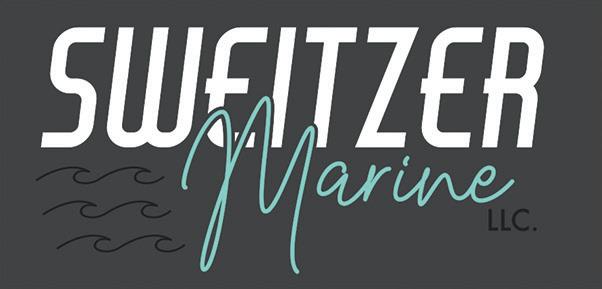






About the Cover Photographer Ruth Wittersgreen, Ph.D.
Ruth Wittersgreen, Ph.D., a clinical psychologist and psychotherapist for more than 25 years, is a relative newcomer to serious photography, the passion for it growing out of work in ecological/wilderness therapy, study of environmental psychology, and a deep awareness of the healing power of nature. A love for travel, a life-long fascination with birds (as well as with other fauna and flora), and a sense of adventure have facilitated the building of an expansive portfolio of wildlife photos and a couple of new career endeavors.
She has recently opened a gallery at 5 East Dover Street, on the corner of Dover & Washington, occupying the third floor of the Daylight Building. She has sold a number of pieces already.
Additionally, selections of my work will soon be displayed and for sale at The Ivy restaurant a block farther west from my location on Dover, and in St. Michaels at Plates At 208.
You can view more of her work at wittersgreenwildlife.com .




Thrifting by Helen Chappell
I have friends who can sense or smell a thrift shop from miles away. No matter where we go, no matter how far from home base, they can zero in on a thrift shop like a dog can find a lost soul in the woods. And in they go, piling through the gently used pants like madwomen. The faint smell of unclean body odor and the fact all I see is stretched-out polyester probably contributes to my preferring to sit in the car.
That and the thought that collecting one more thing, no matter what it is, means two things that are already in my house are going to have to go out. I’m at the twilight of my art and object phase and ready to subtract, not add. But I don’t begrudge their treasures and finds, their cute jackets and slightly used purses. The eternal feminine passion for bargains is something I understand. And thrifting is not limited to


people without ready cash. Many years ago, I glanced at what I

thought was a bag lady in the library, sloping along in her sagging stockings and musty knit hat. A second glance told me it was a woman I knew quite well with an impressive life and a nice chunk of inheritance. She just loved thrifting, and she was just one of many people I’d meet on the way who prowled the racks.
I guess my distaste for used clothing goes all the way back to my birth. As the second oldest of five cousins, I had all the hand me downs, which I got from my older cousin Judy and handed down to my younger cousin Kathy. We were by no means poor, but my Aunt Ha (her family nickname) was a passionate do-gooder and



the queen of every rummage sale and emergency in town. Seriously, she ran the charity rackets, and it’s a good thing she was committed to her mission. She collected so much stuff that she had her own hidden storage room in town. I only know about this because in the ’60s, I was looking for vintage clothes and she opened up her secret treasure cave, and lo and behold, I was soon the proud owner of a Joan Crawford-style muskrat coat. It sounds awful now, but in the ’60s I was the queen of hippiedom, with this ratty old thing with linebacker shoulders and shedding pelts. So being the niece of the Rummage Sale Queen paid off. So, I guess I come by my avoid-









ance of thrift shops honestly because I was in kindergarten before I had new clothes. Or mostly so.
But don’t let my avoidance of thrifting keep you away. It’s almost a religion with some of my friends, and I seem them in great swage they’ve picked up for next to nothing.
And if you know where to look and you have the patience of a hungry tiger, you pick up some great stuff at great prices. There was a Chanel couture suit for sale at the hospital commission shop for like $40. It was a hideous electric blue, but just the right person could have pulled it off.
Serious thrifters, and they are among us, know where to shop in
Easton Maryland Dental




Georgetown and the Upper East Side where the ex-wives of billionaires and politicians drop off their last-season designer labels.
Thrifting can be a hobby, a sport or a way of life, For the huntress on the prowl, it can be a great catch, whether you’re looking for a breadmaker or a set of pajamas for a toddler.
Did I mention how great thrift shops for kids’ stuff? They grow so fast that they never wear anything out, which leaves you with racks and racks of unspoiled kiddie clothes. Whether you’re struggling or sporting, thrifting seems to be the way to go.
Another part of the underground economy is the ritual of




Thrifting with a passion until some dealer figured out there was antique shop money there. The tureen I could pick up for five bucks suddenly cost $250, and I was priced out of the market by some wannabe Martha Stewart – but that’s a story for another day.

the yard sale, and as the weather warms, we’ll visit that.
Thrifting has been a passion for lots of people for a long time. I know. I used to be one of them, scouring piles of dusty china for white ironstone, which I collected

Helen Chappell is the creator of the Sam and Hollis mystery series and the Oysterback stories, as well as The Chesapeake Book of the Dead . Under her pen names, Rebecca Baldwin and Caroline Brooks, she has published a number of historical novels.
















Perched high above the serene Tuckahoe River, this private oasis is flooded with natural light and offers a harmonious blend of comfort and style in a nature filled setting. Spacious layout - bright living room, comfortable waterside family/dining with brick fireplace and a country kitchen - all with wood floors and views of the water. Outdoor living on the screened porch. Four bedrooms, den/office, and a spacious primary with water views! Shed/garage features a versatile workout room and multiple storage areas. Private pier with 10,000 lb. lift and a floating dock. Grounds are beautifully landscaped and include a fenced garden area. $895,000



Adventures in Alaska First Stop - Vancouver?
by Bonna L. Nelson
But did you say Vancouver is not in Alaska? Right you are! Vancouver is in British Columbia, Canada. The city is one of several northwest Pacific ports from which cruise ships depart for Alaska sea tours. Cruise travelers also typically depart from San Francisco, Seattle and various Alaska ports.
There is a window of opportunity, weather-wise, to tour Alaska, generally late spring to early fall, specifically, late April to early October. The peak travel season is mid-June through mid-August, the warmest
and therefore most popular months. On the recommendation of friends who had enjoyed an Alaska cruise, we chose to embark on a sea/land trip during the last two weeks of July 2024.
Also, on their recommendation, we chose Princess Cruises departing from Vancouver and ending in Anchorage. When we booked our adventure with two other couples, friends and neighbors, it was almost sold out a year in advance! Alaska cruises are extremely popular! Then we spent a year planning more details such as

Vancouver flights, dinner options and excursions, but more on that later.
Our ambitious and energetic travel itinerary included a drive from the Eastern Shore to Dulles airport in D.C.; a flight to Vancouver; a day exploring Vancouver; a seven-day Alaska sea tour with several stops at four ports, including tours by train and van and cruising in glaciated bays; train to the interior of Alaska; bus tours and travel to multiple locations, including Denali; bus to Anchorage and flight back to Dulles, then home. We contributed greatly to Canada’s and America’s transportation systems and tested our stamina and endurance!
Travel keeps you young, alert, curious, joyful and in awe of our wonderful world.
First stop Vancouver: after a comfortable 8-hour direct flight, we traveled by another popular mode of transportation, Uber, from the airport to our hotel in the Burnaby suburbs of Vancouver, 30 minutes from downtown. We left 97-degree, humid weather on the Eastern Shore of Maryland for cooler and dryer temps in the 70s and 80s and sun in Vancouver.
On our first day in that city, we toured via the Gray Line Vancouver Hop-On, Hop-Off (HOHO) Bus. With only 14 stops, it was shorter than most HOHOs that we have experienced, made enjoyable with a knowl-




edgeable driver/guide describing the primary sites. We learned that the vibrant seaport has a population of approximately 700,000 and is the most ethnically diverse and densest city in Canada.
The majestic city is encircled by the dramatic Coastal Mountain Range and the waters of Burrard Inlet, English Bay and Fraser River. One of the western seaboard’s busiest ports, Vancouver is known for its beauty, scenery, nature, friendly people, diverse culture, lively art, theater and music scenes, as well as being a popular filming location.
Our first stop was the Vancouver harbor cruise terminal, Canada


Place, which is noteworthy for its glass structure and white roof resembling the sails on an old Spanish galleon, reflecting the city’s maritime history. As in any major city, modern high-rise businesses and apartment skyscrapers are complemented by multistoried cafes, restaurants, shops, museums and green spaces with marinas and dining spots edging the harbor.
We were eager to see the cobbled streets of the historic Gastown district, the gardens and greenery in Stanley Park and the markets and waterfront restaurants on Granville Island among other sites on our HOHO tour.
With our friends and travel companions, Genny and Tom Dalrymple







EASTON CLUB EAST - $520,000
29748 Lyons Drive - 2,184 sq. ft. of elegant, one-level living situated on a premium lot that backs to a tranquil, expansive parcel—part of the original farm that was subdivided to create this wonderful community. The primary suite is tucked away for privacy and overlooks the peaceful backyard. There’s a cozy gas fireplace in the family room off the kitchen and breakfast room.

NEW LISTING - On the fringe of Easton a majestic tree-lined driveway welcomes you to this spacious 4 bedroom, two-and-a-half-bath retreat with oversized two-car garage sitting on just under one acre. Designed with both formal and informal living areas, this home provides ample space for everyone to spread out and enjoy. Add your decorator’s touch to make it uniquely yours. $425,000




This lovely brick colonial is situated on expansive double lot in the heart of historic Easton. It is a 4 bedroom, 3.5 bathroom home that is brimming with classic charm from the side entry leading into the traditional “warming room”, to the period details found throughout including light fixtures and doorknobs.
The kitchen is modern yet retains vintage appeal as it has new stainless steel appliances, durable laminate flooring and refinished original cabinetry with refurbished handles. Custom moldings and millwork found throughout the home add a touch of elegance. Each bedroom has direct access to an updated bathroom.
New HVAC added to the second floor. Sunroom with wall of windows provides abundant light.
Detached two-car garage and ample parking with circular drive.
This stunning home is an absolute must see if you love classic charm with modern amenities. Just blocks from downtown Easton’s shops, restaurants and entertainment.

BENSON & MANGOLD REAL ESTATE



The Chaffinch House is nestled in the heart of Easton’s picturesque landscape. Dating back to 1893, this Queen Anne Victorian residence underwent meticulous restoration in 2019, preserving its timeless elegance. It boasts inviting porches ideal for relaxation and entertainment, including a screened-in dining area and a secluded rear porch overlooking the enchanting garden. Step inside to discover a grand foyer graced by an intricately carved oak staircase, guiding you to exquisitely designed living spaces featuring soaring ceilings and stunning hardwood floors. The living room and family room exude historic charm, each boasting a distinctive fireplace. Entertain guests in the spacious dining room with a bay window, accommodating up to twelve, seamlessly connected to the updated kitchen. Ascend to the second level, where three luxurious bedrooms await. The primary suite includes a fireplace, tranquil sitting room, a screened sleeping porch and a second porch with sauna. The top floor has two additional bedrooms boasting ensuite baths. Embrace the heritage of this remarkable residence, recognized by the Maryland Inventory of Historic Properties as a quintessential Victorian mansion.
| $1,995,000 | 132SouthHarrisonStreet.com
Vancouver of restored 19th-century buildings, boutiques, galleries, cafes, restaurants, courtyards, music venues and the famous Steam Clock. We left the HOHO bus to tour the village and enjoyed freshly made almond brioche, chocolate-filled croissants and crispy donuts, as well as Vancouver’s best coffee at an outdoor cafe next to the clock.
and Rita and Paul Connolly, husband John and I hopped in another Uber which took us to the Canada Place Cruise Terminal. The terminal also houses a hotel, two convention centers and the site where the following day we would be dropped off to board the ship and begin our muchanticipated Alaska cruise.

Stanley Park, a green oasis in an urban landscape, was one of our favorite tour spots with its 1,000 acres of lush gardens, natural rainforests, hiking and biking trails, beaches, an aquarium, totem poles, historic landmarks, and mountain and harbor views. We just had a taste of the park from a bus, admiring the abundant multicolored rose garden and inviting forested areas. The Dalrymples, who had arrived a few days earlier, had hiked and biked in the park and shared their wonderment at its beauty.
Another favorite stop on the tour was Gastown, with its cobblestoned streets and gas streetlamps, facing the Burrard Inlet. The area is a mix

The Steam Clock, the world’s first, was built by a local man in the 1970s. It whistles and steams every fifteen minutes on the corner opposite the comforting coffee café where we took respite. According to various sources, the steam-driven clock was built over a major steam vent that was part of Vancouver’s original underground steam heating system. The original purpose of the
Wishing everyone a happy, healthy and prosperous New Year!
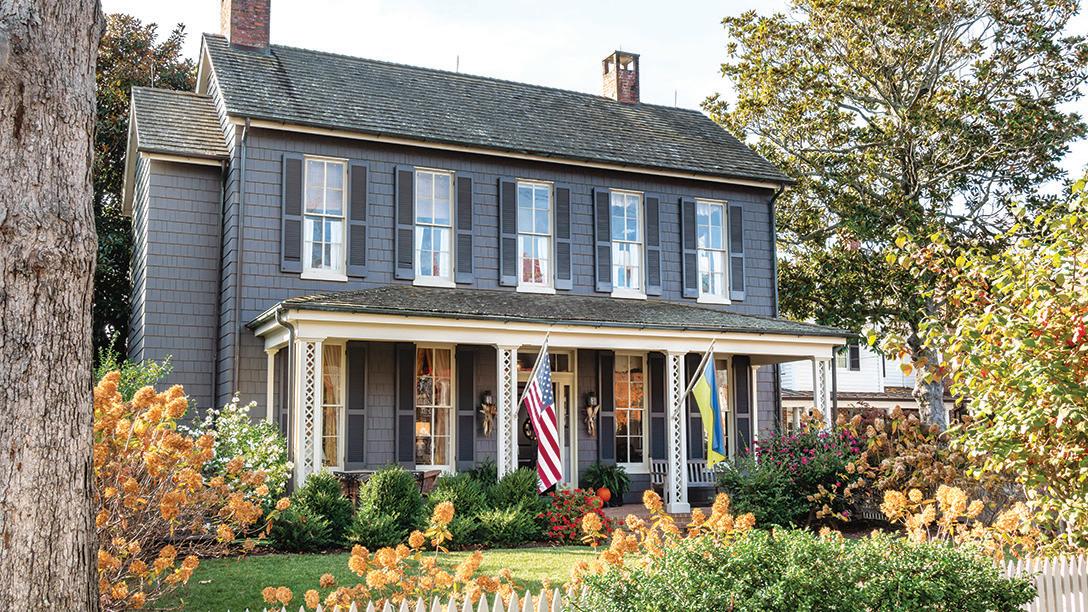



This restored 1870 waterfront home in Oxford blends historic charm with modern luxury, featuring 10-foot ceilings, custom paneling, and inlaid wood floors. The waterside primary suite offers a sitting room, fireplace, and private balcony. The gourmet kitchen and formal dining spaces are perfect for entertaining. Enjoy a sparkling pool, riverfront patio, and detached garage/studio. $2,395,000

Simply Exquisite Tred Avon Waterfont!
Vancouver clock was to prevent people from sleeping on top of the vent after a night in the pubs.
Now the clock is Gastown’s most famous landmark. It has been renovated and is still steam powered. It whistles instead of chimes. The Steam Clock looked like a grandfather clock to me. It has been described as a copper-clad Victorian design, but also as Art-Deco and French—who knows? Either way, it was a hit with us, and it is a hit with tourists who all clamber to get a photo next to the clock. Fellow traveler Tom, a clock collector, was enamored with the marvelous site. We savored our coffee and pastries while people- and clock-watching on the square.
After strolling through Gastown shops, we hopped back on the HOHO tour for some more Vancouver adventures. We drove past notable Vancouver sights, including Chinatown, Plaza of Nations, BC Place Stadium, the Queen Elizabeth Theatre, museums, shopping districts, entertainment districts, hotels and waterfront areas.
We hopped off at a HOHO stop near a walkway to Granville Island on Faise Creek. After a short stroll across the Granville Bridge, we spotted a brewery with waterfront dining overlooking the harbor and thought it the perfect spot for lunch on a sunny, warm day.

Granville Island is on the south side of Vancouver and was developed in the early twentieth century as an industrial site. Over one hundred years later, it has been transformed into a popular cultural center with waterfront restaurants, artists and art galleries, theatres and street performances and a world-class farmer’s market.
After a delicious lunch with craft beers, we strolled through the streets, shops and Granville Island Public Market. I was impressed by artistic arrangements of multicolored fresh fruits, including strawberries, pears and plums and took several photographs. The variety of food and other products offered up and down endless aisles, as well as the tastes and aromas of many authentic cuisines, reflect Vancouver’s ethnic diversity.
We were all fascinated by a variety of arts and crafts shops as we strolled on the island, including the handcrafted broom shop, beautiful, artistic brooms in a variety of shapes and sizes, the wrought iron art shop and First Nation arts and crafts shops. We stopped to observe artists demonstrating these


unique, original and traditional local arts and crafts.
It was time to head back to the hotel to have dinner, discuss our adventures and plan our next morning with transfer to the Princess Cruise ship. We talked about our year of planning via texts, emails, calls and gatherings to make decisions related to our adventure. Travel planning can be complicated, and we had six people who needed to agree on some basic details. I am happy to say that we managed the planning and executed the trip marvelously and with
humor and are still good friends.
The first hurdle was agreeing on cruise dates, then cabin selections near each other and amenity package levels. Booked and check, check, check. Flights to and from and airports as well as when to arrive to tour Vancouver and when to leave to tour Anchorage were next. Check, check, check.
We watched YouTube videos about the cruise sites, land sites and arrival departure ports as well as read numerous books and guides and conducted internet searches to determine which tours and excursions we wanted to experience. That











research led us to make decisions throughout the year and right up to trip departure. We decided to experience some excursions together and some separately, depending on our varied interests. A big check on how well we worked together and how well our planning process worked.
On our fi nal day in Vancouver, we boarded the Grand Princess. Check-


ing in was smooth and easy with preboarding documents loaded prior to the big day. Luggage was in a holding area and would be delivered later. We purposely arrived and boarded early to explore the ship and enjoy lunch and cocktails with fewer crowds.
We raised our glasses to our friendship and adventure as we bid farewell to Vancouver, sailing past its impressive skyline with mountains in the background and into the Strait of Georgia, then a sharp right toward Alaska. Onward to the Pacific Ocean and north to the Inside Passage along Alaska’s southeastern coast.







Two Child Prodigies to Perform by Maria Grant
It is crystal clear that Chesapeake Music’s February 16 Interlude Concert will not disappoint. Two amazing multiaward-winning musicians will be featured: pianist Janice Carissa and violinist Stella Chen.
Carissa began studying piano in Indonesia at the age of five with her self-taught pianist mother. She entered the Curtis Institute of Music at age 15 and debuted with the Philadelphia Orchestra at age 16 and with the Orpheus Chamber Orchestra at age 19. Carissa studied under professors Gary Graffman and Robert McDonald and went on to receive her master’s degree from the Juilliard School. She was recently named a Gilmore Young Artist and has won the Salon de Virtuosi Award and the American Protégé Star Performer Award. She has captivated audiences from the Sydney Opera House to the Kennedy Center and Carnegie Hall.
Critics praise her playing, saying she has a “fleet-fingered touch” and tells “a vivid story.”
In past concerts, Carissa has tackled the challenging works of Liszt, Bach, Beethoven, Granados,

Busoni, and Scriabin. Carissa has said that her goal as a performer is to spread the joy of music. Rest assured that on February 16, she will do just that.
Chen grew up in Silicon Valley and began playing the violin at age seven. Her teacher, Li Lin, a passionate violinist, encouraged her “to produce an interesting sound at all times.” Gramophone 2023 Young Artist of the Year, Chen garnered worldwide attention with her First Prize win at the 2019 Queen Elisabeth
Janice Carissa



Two Child Prodigies

International Violin Competition, followed by the 2020 Avery Fisher Career Grant and the 2020 Lincoln Center Emerging Artist Award. She is the Inaugural recipient
of the Robert Levin Award from Harvard University. Her mentors include Levin, Donald Weilerstein, Itzhak Perlman, Miriam Fried, and Catherine Cho. Chen has performed as a soloist with the New York Philharmonic and the Chicago Symphony and has appeared in venues such as Carnegie Hall, Lincoln Center, Vienna’s Musikverein and Berliner Philharmonie. She plays chamber music with Perlman, Weilerstein and Levin.
In March of 2023, Chen produced a stunning debut album called Stella X Schubert. Her instruments include the 1700 “exPetri” Stradivari and the 1708 “Huggins” Stradivari.


For the Chesapeake Music Interlude concert, there will be solo performances by both Carissa and Chen, followed by a duo performance. Predictions are in—a magical evening is in store. Tickets for the Interlude Concert on February 16 at Easton’s Ebenezer Theater are $50. Chesapeake Music also offers free tickets for students and music educators, as well as a “buy-one get-one” option for those who are new to Chesapeake Music and want to bring a friend. To purchase tickets, visit chesapeakemusic. org.

Stella Chen






TIDE TABLE
OXFORD, MD JANUARY 2025
1. Wed.
2. Thurs.
3. Fri.
4. Sat.
5. Sun.
6. Mon.
7. Tues.
8. Wed.
9. Thurs.
10. Fri.
11. Sat.
12. Sun.
13. Mon.
14. Tues.
15. Wed.
16. Thurs.
17. Fri.
18. Sat.
19. Sun.
20. Mon.
21. Tues.
22. Wed.
23. Thurs.
24. Fri.
25. Sat.
26. Sun.
27. Mon.
28. Tues.
29. Wed.
30. Thurs.
31. Fri.
SHARP’S IS. LIGHT: 46 minutes before Oxford
TILGHMAN: Dogwood Harbor same as Oxford
EASTON POINT: 5 minutes after Oxford
CAMBRIDGE: 10 minutes after Oxford
CLAIBORNE: 25 minutes after Oxford
ST. MICHAELS MILES R.: 47 min. after Oxford
WYE LANDING: 1 hr. after Oxford
ANNAPOLIS: 1 hr., 29 min. after Oxford
KENT NARROWS: 1 hr., 29 min. after Oxford
CENTREVILLE LANDING: 2 hrs. after Oxford
CHESTERTOWN: 3 hrs., 44 min. after Oxford
3 month tides at www.tidewatertimes.com 4:09 4:55 5:44 6:37 7:35 8:36 9:40 10:45 11:5012:30 1:30 2:25 3:17 4:06 4:54 5:42 6:31 7:23 8:18 9:14 10:10 11:05 11:5812:29 1:23 2:12 2:59 3:46 4:35








Happy Holidays and Prosperous New Year !

• Kayak Docks
• Re-Decking
• Pressure Wash & Seal
• Boat Lifts, PWC Lifts
• Gangways
• Solar Dock Lighting
• Floating Piers
• Rowing Docks
• Kayak Racks
• Ladders
• Dock Boxes
• Piling Caps

Family, Home and Love
by Rev. Michael Valliant
I come from a family of just a few. It was my sister and I, my mom is an only child, my dad had an older sister who has a daughter. That makes for one aunt and one first cousin. My aunt passed away in December, transitioning while in the gracious and wonderful care of Talbot Hospice.
My aunt Elaine (Valliant Cox) is one person who has been around for every moment of both my father’s and my lives until last month. Elaine and my cousin Jennifer have been two of the constants for me. My sister Susie is five years younger than I am, and when my dad was driving my mother to the hospital for her to give birth, he dropped me off at my aunt and uncle’s and I stayed there until they brought my sister home. When I picture joyful moments from childhood, they are often family gatherings for birthdays and holidays with Elaine and Jennifer, grandparents, godparents, cousins and close family friends. There is belly laughter, music, food and, for spring and summer birthdays, backyard wiffleball. All these get-togethers happened in Oxford in various houses.
When Elaine and my father’s

parents, aunts, uncles and other family members passed away, the funerals were mostly at the Church of the Holy Trinity in Oxford. Holy Trinity is the church where all of us were baptized and confirmed; where Elaine and my mom volunteered to be our Sunday School teachers, organize the Christmas pageants and corral the other kids in an orderly fashion. I am not sure who was in charge when I fell off the stage in the Parish Hall there and fractured my skull, but that was water under
Family, Home and Love

This photo is from my baptism with my godparents, Doug Hanks Jr. and Elaine and her husband Lance Cox.
the bridge as soon as they let (made) me wear my Baltimore Colts football helmet to nursery school.

For much of my life, early childhood through teenage years, then again when the next generations of Valliants and Hutchisons (my sister’s family) started to arrive on scene, we have taken family trips to Ocean City most summers. My parents, Elaine and Jennifer, my family, Susie and her husband Chad and their kids would all stay together. Elaine and I were the early risers
My concept of what family is has been formed by Elaine and Jennifer either hosting or being present for all the ups and downs that happen in life. When my daughters were born, they were each given middle names that were big in our family: Anna’s is Louise; Ava’s is Elaine. We had multiple Louises in our family. There is only one Elaine.

9725 Tilghman Island Road, McDaniel, MD 21647
Nice size 3 bedroom 2 bath rancher on almost 2 acres with a detached 2 car garage and 2 storage buildings. Some renovating will bring this home back to its original charm. is home also o ers an eat in kitchen, living room, utility room/o ce and 3 season sunroom. $290,000
123 Bloomingdale Avenue Federalsburg, MD 21632
Beautiful Colonial just a few minutes drive to a 4 mile long Riverfront walkway along the Marshyhope River in Federalsburg, great for shing, canoeing and kayaking. e original home was built in the 1900's from Oak and hardwood trees from the back yard and the wood ooring was cut and milled from Georgia pine.
is home o ers 2 large bedrooms, 1 and 1/2 bath room, living room, dining room, a well appointed kitchen with an eat-in kitchen leading to an outdoor deck overlooking a large back yard.
$299,900





Family, Home and Love
and would meet each other on the deck for coffee and the sunrise and to people-watch the stragglers on the beach from the night before or out for their morning walks. Sometimes we would talk, most times we would laugh, sometimes we would just watch the morning start.
Both Elaine and my mom became parents at a time when they could stay at home to raise their kids. As such, you can’t encompass who they were with a job title or a career. If you ask me who Elaine was, I couldn’t just say she was a teacher, she was a doctor, she was a coach, she was a counselor or she was a chef—but for all of us, she was each of these things. She was defined

more by the people and things she loved than what she did for a living. Being defined by who and what you love is a great legacy.
Love. Generationally, our family is not one who said, “I love you” to each other. Emotions aren’t ex-

Elaine (left, in red), my Mom (Robin Valliant), Anne Stalfort (Doug Hanks III’s mom) and Elaine’s father over Anne’s shoulder.
Aunt Elaine holding Ava Elaine.





Family, Home and Love

Sunrises in Ocean City that Elaine and I would catch.
pressed that way. But none of us ever doubted that we were loved. Love is something that is shown in action and in presence. What does love look like?
Love looks like cooking all day for family dinners, sending everyone home after and then doing the dishes by hand because there is no dishwasher in the house.
Love looks like trips to Ocean City and sitting with two- or three-year old Anna blowing bubbles together and watching them blow off the balcony for hours on end.
Love looks like caring for your father when he is in his 90s and wants to stay in his house.
Love looks like getting up in the middle of the night when there is a fire call to go down to the firehouse to make coffee and food for the volunteer firefighters.
Love is making chocolate pie for your family at every function because everyone loves it, and I don’t know if Elaine ever even ate a slice of it.
Over the past several years, Elaine’s health began to fail and increasingly, Jennifer and her partner Matt became her caregivers.
Love is going from being the daughter, to a peer, to a best friend, to becoming the caregiver for your mother for the last years of your lives together.
Love is setting up and changing hummingbird and bird feeders by the window so that your mother can watch birds from her chair.
Love is bringing different family photos into your Hospice room each day so you can be surrounded by wonderful memories.

Love is knowing what television channel to put on to make a hospital bed feel like home.
Love is staying bedside over the last days and last hours.
Matt is fiercely allergic to cats. Jennifer and I were sitting in Elaine’s house after she passed, and Matt pulled up in front of the house. Elaine’s cat Bella, who was nowhere to be found for a few hours, came racing down the stairs, recognizing the sound of Matt’s truck. That’s what love looks like.
Jennifer recently mentioned having a hard time feeling like anywhere is home. This came from the realization that the houses from her growing up were all either gone, changed or about to be gone or changed.

Brother and sister.
Adding to that sense, our family has been on the Eastern Shore and in and around Oxford since the 16001700s. We’ve seen pieces of and heard accounts of family stories that reach back to a time that doesn’t exist in the same way anymore.
That’s not a judgment of change


Family, Home and Love
being good or bad, it’s simply change, it’s different and it can jar your equilibrium.
What is home and how do you find it?
There is a Welsh word, “Hiraeth,” which translates along the lines of missing a time, an era or a person— being homesick for something that may not exist any longer while also being grateful that that place or person existed.
What a word. What a concept. What a feeling.
I wonder if what we are looking for is love. If it’s not a place, but people we belong with, and a deeper sense of an abiding presence and feeling that is underneath those places that change and our loved ones who pass away. The fact that we love and
long for someone after they are gone shows us that love is bigger than change, bigger than death, bigger than the passing of time.
I have been privileged to know family, love and home in the deepest ways. I hope I can take what Elaine showed us, from her love of nature, gardening, birds, hummingbirds and being there with family through it all, and continue to pass that along.

Rev. Michael Valliant is the Assistant for Adult Education and Newcomers Ministry at Christ Church Easton. He has worked for non-profit organizations throughout Talbot County, including the Oxford Community Center, Chesapeake Bay Maritime Museum and Academy Art Museum.

Jennifer Cox, Elaine, my mom, and my Dad (Bob Valliant).



WorkHorse Farm A Vietnam Veteran’s Legacy
by Tracey F. Johns
For many of our veterans, serving in the Vietnam War came with plenty of memories worth suppressing or redirecting. Many didn’t survive or went on through therapy and other community support to combat depression, alcoholism, drug addiction, PTSD, and other challenges.
One local soldier named Nick Mielke, however, returned home with more than bad memories of the war. He had a mission to bring
Vietnam’s beauty by way of a water buffalo to his farm of working horses in Denton, Maryland. What happened next turned into something much bigger, with a menagerie of rescue and exotic animals who call WorkHorse Farm Rescue and Exotics home.
Nick recently passed away, and now his daughters and other family keep his legacy alive by continuing with the farm.
It all started, according to


Nick’s daughter, Destini Pritchett, because her dad fondly remembered the water buffalo while he was serving in Vietnam.
“When we got this farm, it had the bamboo in the pond and everything,” said Pritchett. “He said he wanted a water buffalo to feel like he was back in ’Nam for some reason.
“So, a friend of ours had this little scared water buffalo in the back of a trailer, and he didn’t care if it was gonna kill us when it came out or not, and he brought it home,” continued Pritchett. “And she lived to be about 20 years old before she ended up passing away.”
Mabel, as the buffalo was named, became the heart of the farm, setting the tone for what would become a haven for exotic

and rescue animals. Today, Nick’s daughters, Destini Pritchett and Tiffany Mielke, along with their cousin Krystal Mielke, run the farm and continue his mission.
“We rescue the farm animals, including the horses,” said Mielke. “And we work with other facilities to ensure the exotics are in the best facility for the animal.”



Over the years, the farm has expanded to include a variety of animals, from kangaroos and wallabies to capybaras and a two-toed sloth named Buddy. According to Mielke, the farm operates with strict USDA licensing and guidelines, ensuring the safety and well-being of the animals.
“We primarily stick to hoof stock and some of the smaller mammals,” said Mielke. “You won’t find lions, tigers or bears here, for example.”
The farm also offers unique hands-on experiences for visitors, including weekend farm tours and
special encounters with otters, camels and more. These encounters can all be scheduled online and provide critical revenue to maintain the farm, all while allowing the public to connect with animals in ways not possible in traditional zoos.

“Our mission is to teach others about these amazing creatures and give everyone an experience with the animals you would only be able to look at in a zoo,” said Pritchett. “We provide facts about not only the species of animal but also facts specific to that animal— their likes, dislikes and quirks.”
Despite the challenges of running a family-owned nonprofit, the women of WorkHorse Farm re-

main steadfast in their dedication to the animals and their father’s vision. The farm is primarily selfsupported through public tours, field trips for schools and homeschool groups, and special events.
“It’s all family-owned and run,” said Pritchett. “My sister and I handle most of the day-today work, and our cousin Krystal

comes down on weekends to help. It’s a labor of love.”
Looking to the future, the family hopes to expand and improve the animal enclosures while continuing to educate the public. Volunteer opportunities are available, particularly during the spring when the farm undertakes its annual cleanup efforts.
“We’re hoping to expand more, really get our pens up to date, and make them a lot better,” said Mielke.
Through their dedication and hard work, the legacy of Nick Mielke and his love for animals lives on. For those looking to visit or support, WorkHorse Farm Rescue and Exotics is located at 25883



WorkHorse Farm
Garey Road in Denton, Maryland. Tours and animal encounters can be scheduled through their website at workhorsefarm.org or by calling 410-253-2035.
From a single water buffalo inspired by memories of Vietnam to a thriving haven for exotic animals, WorkHorse Farm is a testament to one man’s vision and the enduring power of family and community.
Animal Encounters at WorkHorse Farm
WorkHorse Farm offers handson experiences with a variety of animals, including:
•Otters: Meet Smith and Wesson, adopted as babies after being rejected by their mother.
•Capybaras: Meet Bonnie and Clyde, the farm’s resident capybaras.
•Two-Toed Sloth: Buddy the sloth is a favorite among visitors.
•Dromedary Camel: Henry, the




WorkHorse Farm

charismatic camel, started the farm’s journey into exotic animals. Visit workhorsearm.org to book your encounter or learn more about supporting this family-run rescue and sanctuary.

Tracey Johns has worked in communications, marketing and business management for more than 30 years, including non-profit leadership. Tracey’s work is focused on public and constituent relations, along with communication strategies, positioning and brand development and project management.



Nan
(written about 1941 by Louis C. Wainwrighttranscribed, edited and with notes by James Dawson
In the 1880s, exquisite Nan, admired, sought, beloved, was no dream of a theorizer’s fancy. She was neither Kingsley’s Hypatia nor Burney’s Evalena, neither Eliot’s Romola nor Corelli’s Thelma, who were heroines in literature then, but was exquisite Nan, original and pure American, witty, lithe and lovable.
She was one of those rare young women who are a delight to all, capable, and offensive to none. As Ann Hathaway, she had a way that charmed her elders, attracted young women, fascinated young men and even children.
She was well schooled, vivacious, born among the pungies, schooners and canoes—and tutored in Baltimore, and welcome wherever she went.
It was neither of her designing or deep-laid schemes that the young men, as moths about a flame, hovered around her. How could she help it if they thought her entertaining and lovely?
How many pursued her, or how many wooed her I do not know, but know this only, that in time one claimed her for a bride. He was the son of a distinguished Baltimorean and in high office.
One at last would probably claim her hand, and had she had a hun-

dred hands, as Briareus in Greek mythology did, there would have been a hundred claimants.
All of Nan’s friends assumed that she would make a notable marriage, but all felt that the good old days of grandeur, wit and comely frolic would come to the end of its year, that romance had lost a wing, and that the choice society on Deal’s Island would lose its brightest candle if Nan settled down to be Mrs. Somebody, a wife.
People liked Nan, young people, people of importance and plain people, for Nan was gracious, was refined, spirited, kindly and totally
elegant; but neither lofty nor supercilious. Attractive and cheerful, Nan was superb.
She spent the summers and part of the falls on Deal’s Island, where everybody knew her, and when even the boats seemed to be more trim and sprightly, and had more of a spring in their step.
She spent the winters and early springs in Baltimore where she attended Educational institutions or flashed down North Charles Street. That was in the days when North Charles Streets’ fine residences had not been converted into modish shops.
When Nan came home to The Island, all the aspirant swains bought new suits; when she returned for the winter to Baltimore, all the City’s leading gallants made ready to pay her court.
Discreet and discerning, and genial, Nan was in Baltimore and was simple and careful on The Island. Wherever she might be there were nightly suitors seeking her favor. Being prudent and tactful, avoidance of awkward situations claimed, also, much of her time and attention, for gay youth is also sometimes rash youth. Nan had both poise and equipoise. She was alert as well as gracious
On The Island she rarely made social engagements with any individual, though the would-be beaux
might be numbered by dozens, but contented herself with attending such functions as the parties or home gatherings of her companions and friends.
Many swains were wishing to take her sailing, walking, or riding, but in some graceful way she declined their overtures.
The parties with their well-worn local games, however, were a diversion and sport which she enjoyed no little. Several of the well-known games were expected to be introduced at any party, and one of the most favored was something like a square dance or a Virginia reel. Though there were organs and pianos available, and even violins, the young people preferred to sing some well-known doggerel or trivial verse to mark the time and all sang as they paced to and fro to tread out the figures,
It might be this:
“I put my right foot in,
“I take my right foot out,
“I give my right foot a shake, shake, shake,
“and turn me right about;” or perhaps that old graybeard ditty,
“O I am a dorrido”-
But for the reel there was one which all sang lustily. It must have been of olden date, perhaps as old as the colonies.
What it lacked in sense had full compensation in verve. It ran:
“All down, all down, all down to

Nan
toddy O!
“I come a-linktum to swing your lady,
“I come a-linktum to swing your lady,
“I come a-linktum to swing your lady,
“All down to toddy O.”

During the singing, in turn the young men would advance toward a young woman, would “balance,” swing her and return her to her place, and then keeping time the while, with his face toward the lady, would find his former position, by dancing backward. Of course, this description is not intended to exclude the country fiddler and his calling of figures, nor the “hoe down,” nor the Virginia reel any of which might occasionally occur.
Another favorite game was “Drop Handkerchief,” and many a bold osculation was excused by the game, and which was the reward and incentive of the game. Of course, the girls were never willing, but somehow the young man rarely missed the reward.
In this game, Nan was conspicuous. The young men tried to catch her many, many times; but Nan was nimble, and the young swain, who could drive a schooner or scull a yawl, could never move speedily or deftly enough to catch and kiss her. She rather enjoyed their discomfiture and teased them in her frolic. She would wound none, yet she was discreet.
Nan entered into the game with the others; she enjoyed their zest, but somehow she was always nimble or fleet enough to escape her pursuers. She seemed to have affinity for none on The Island, perhaps the undercurrent of her thought was in Baltimore, where she was tutored and later was one of the belles, and worthily so.
Among the would-be beaux of The Island was Prester Webber, the youngest of several brothers, all of whom were capable sailors, successful dredgers and wharf salesmen, and owned each a trim, lively schooner. It was on the deck of Prester’s well-kept vessel that many of the summer parties were assembled, and at which Nan was a most welcome guest.
She might have suspected it, but whether she did or not, the parties on Prester’s schooner were given for Nan.
The Webber boys were well favored, industrious and thrifty. They were not schooled much, but knew the elementaries, were intelligent
and knew sailing and dredging and the Bay; besides they all were at the heart-blooming age and had a keen eye for comely, strong and kindly, and had a longing of heart scarcely defined, but ever present and expanding.
He cast an infatuated glance on

Nan and was thrilled more and more, as the yearning rose toward torrid temperature; but his natural shyness in company reduced him to silence, so that with his heart’s big proportions there came a certain lip paralysis of no uncommon occurrence among young lovers.
Of course, Prester attended the summer outings and the winter parties with their games.
He balanced and swung with Nan whenever the way was opened, and sang, “I come a-linktum” with zest, as he schotisched toward her; but when it came to “Drop the Handkerchief.” Prester always had unsteady sea legs and could not catch the Nan
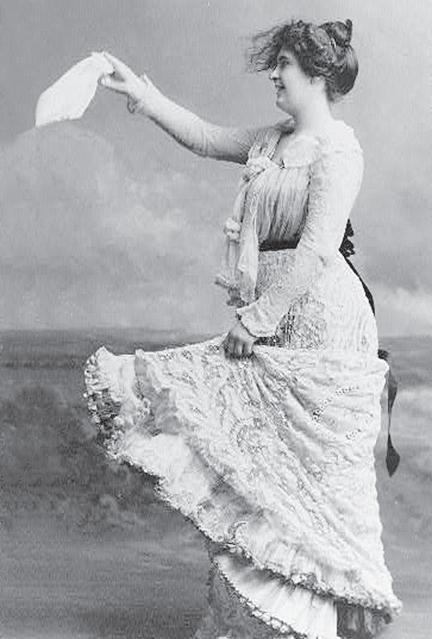

nimble elf. Nan always escaped his advances.
One evening at a party Prester had a wave of vigor and for a moment a strength of nerve.
Nan was sitting near the one vacant chair, enjoying the mirth and laughing at the players.
She was a little weary and sat for a moment’s rest. Prester saw the vacant chair and, recognizing an opportunity, gallantly forgetful of all embarrassments, in a trice before either she or he know it, he was sitting near Nan.
Leaning toward her he stammered, “Say, Nan!”
In surprise, Nan turned and exclaimed, “Why, Prester, how did you get here?”
Prester blushed, and looked more than admiringly at her, but for some reason his lips were again paralyzed.
Nan humorously and wonderingly looked at him, saying nothing more, but waiting for his lockjaw to relax.
With much effort Prester forced his lips and again said, “Say, Nan!”
“What is it, Prester?” she responded. Poor fellow, he could not speak, but looked imploringly at her.
Nan ventured some “first-aid” remark to relieve approaching embarrassment, but he remained silent.
Now the Webber boys had a fine new buggy (for this happened in the horse and buggy days) and without a thought of consequences, but simply

Nan
to relieve Prester’s embarrassment, Nan remarked, “I saw your new buggy, Prester, and thought it trim and pretty.”
In this idle remark Nan lighted by chance on the very word Prester was struggling with stuttering lip and stammering tongue to enunciate. The radiance of a great relief overspread his countenance, and with a sudden vocal flow he said, “Yes, Nan, I am at home for a day, will you go riding with me to-morrow evening?”
Nan quickly arose to mingle in the games. She saw she was trapped by her own words, and laughed merrily, saying, “All right, Prester! Thank you. Now call, please just after supper.”
Her thought was she could take the ride and be home again before dark.
Prester was a happy man. Soon after he went home to see whether the buggy was polished and the wheels greased to be ready for the day or days in his dreams; and surely enough after supper was done, Prester smiling and blushing and prompt to inconvenience drew up with his new buggy to the door.
Sparring for time Nan bethought her of a sick old lady to whom she could send a bouquet and a delicacy which Prester might deliver before they set out on the ride; for Nan was prudent and careful of her social
conduct. She was willing to grant Prester an hour’s pleasure with the horse, but from supper to dark was an imprudently long period.
So it was that Nan graciously greeted him and having complimented his choice of a buggy, she hastened to make ready.

Upon her reappearance, Prester gallantly assisted her to a seat in the buggy, and having entered himself, he fluttered the reins, and gave Prince orders as a Captain of a schooner would do, saying, “Get up, Prince.”
The horse sensed that something unusual had occurred and made fine exhibit of his gallantry, tossing his head high and curvetting for a moment, and then set out for the land of romance.
Prester was thrilled to electrification, but the “cat had gotten his tongue” or the strange paralysis had returned, and words came with difficulty.
More than an occasional monosyllable seemed beyond his best endeavor, but Nan kindly relieved
the strain and merrily chatted away, telling of Baltimore people, the church bazaars, the new Lyceum, her visits to Peabody Institute, the Bay and Druid Hills.
So Nan talked and talked, breaking the monologue if possible, with an occasional question.
“Did you ever visit the park, Prester?” and blushing Prester might ejaculate a monosyllable.
In such a manner they rode on. To Prester it was joy inexpressible, while Nan, gracious and witty, endeavored to relieve the sameness with her ready quips, descriptions and questions.
Prester was bashful to awkwardness, but every moment of the ride was sweet.
Nan mindful of proprieties suggested their return home. Prester turned the horse.
The buggy flashed, the wheels ground in the sand, and Nan essayed fresh ripples of conversation. Prester thought her eyes were like stars but could not find fit words to express it. His inability to talk distressed him, Nan was becoming weary, so that conversation dragged somewhat, and Prester in amateurish pride felt that in some way the responsibility of entertainment rightly fell in some degree upon him, as that he must not leave all to Nan.
They were approaching the home stretch; Prince, the horse, whinnied; Prester coughed, Nan was dreaming. Thought Prester, the silence must be

broken. What tale of interest could he tell. What commonplace, even of Island life could he narrate. He must rise to the situation and say something; so, therefore, he coughed again.
Nan was leaning a little wearily on the back of her seat; the silence was almost vocal; Prester coughed twice and braced himself, and at last said, “Say Nan?”
“Say what, Prester?” she responded.
“Nan, what do you think?”
“Yes, Prester?”
“Why, Nan, we sopped a whole bar’l o’ ‘lasses at our house, last year.”
Drawled Nan, with slight laughter in her tone, “Well. Prester, you certainly were a-sopping.”
This tale in substance was told me for truth, but I cannot say, I knew Nan, however, and she could have done it.
Notes by J.D.: A schotische was a slow dance like a polka. ‘Lasses was molasses commonly used as a sweetener then. The Peabody Institute in Baltimore was and still is an upscale private music, dance conservatory and preparatory school. A lyceum is an association that provides public lectures on various topics.

James Dawson is the owner of Unicorn Bookshop in Trappe.






"Welcome to our Roadhouse Bar & Grill, where the open road meets mouthwatering flavors and good ol’ fashioned hospitality. In the heart of Preston, Caroline County, we are not just about great food; we’re about creating great memories" ~ Ian & Elinor Fleming Serving Lunch 11:30 a.m. - 2:30 p.m. ~ Mon through Sat inclusive Serving Dinner 4 p.m. - 8 p.m. ~ Tue through ur inclusive 4 p.m. - 8:30 p.m. ~ Fri and Sat 201 Main St., Preston, MD 667-342-4024 Reservations Recommended!

Caroline County – A Perspective
Caroline County is the very definition of a rural community. For more than 300 years, the county’s economy has been based on “market” agriculture.
Caroline County was created in 1773 from Dorchester and Queen Anne’s counties. The county was named for Lady Caroline Eden, the wife of Maryland’s last colonial governor, Robert Eden (1741-1784).
Denton, the county seat, was situated on a point between two ferry boat landings. Much of the business district in Denton was wiped out by the fire of 1863.
Following the Civil War, Denton’s location about fifty miles up the Choptank River from the Chesapeake Bay enabled it to become an important shipping point for agricultural products. Denton became a regular port-ofcall for Baltimore-based steamer lines in the latter half of the 19th century.
Preston was the site of three Underground Railroad stations during the 1840s and 1850s. One of those stations was operated by Harriet Tubman’s parents, Benjamin and Harriet Ross. When Tubman’s parents were exposed by a traitor, she smuggled them to safety in Wilmington, Delaware.
Linchester Mill, just east of Preston, can be traced back to 1681, and possibly as early as 1670. The mill is the last of 26 water-powered mills to operate in Caroline County and is currently being restored. The long-term goals include rebuilding the millpond, rehabilitating the mill equipment, restoring the miller’s dwelling, and opening the historic mill on a scheduled basis.
Federalsburg is located on Marshyhope Creek in the southern-most part of Caroline County. Agriculture is still a major portion of the industry in the area; however, Federalsburg is rapidly being discovered and there is a noticeable influx of people, expansion and development. Ridgely has found a niche as the “Strawberry Capital of the World.” The present streetscape, lined with stately Victorian homes, reflects the transient prosperity during the countywide canning boom (1895-1919). Hanover Foods, formerly an enterprise of Saulsbury Bros. Inc., for more than 100 years, is the last of more than 250 food processors that once operated in the Caroline County region.
Points of interest in Caroline County include the Museum of Rural Life in Denton, Adkins Arboretum near Ridgely, and the Mason-Dixon Crown Stone in Marydel. To contact the Caroline County Office of Tourism, call 410-479-0655 or visit their website at www.tourcaroline.com .







Easton
Map and History



The County Seat of Talbot County. Established around early religious settlements and a court of law, Historic Downtown Easton is today a centerpiece of fine specialty shops, business and cultural activities, unique restaurants, and architectural fascination. Treelined streets are graced with various period structures and remarkable homes, carefully preserved or restored. Because of its historical significance, historic Easton has earned distinction as the “Colonial Capitol of the Eastern Shore” and was honored as number eight in the book “The 100 Best Small Towns in America.” With a population of over 16,500, Easton offers the best of many worlds including access to large metropolitan areas like Baltimore, Annapolis, Washington, and Wilmington. For a walking tour and more history visit https:// tidewatertimes.com/travel-tourism/easton-maryland/.







Dorchester Map and History




Dorchester County is known as the Heart of the Chesapeake. It is rich in Chesapeake Bay history, folklore and tradition. With 1,700 miles of shoreline (more than any other Maryland county), marshlands, working boats, quaint waterfront towns and villages among fertile farm fields – much still exists of what is the authentic Eastern Shore landscape and traditional way of life along the Chesapeake.
For more information about Dorchester County visit https://tidewatertimes.com/travel-tourism/dorchester/.



Queen Anne’s County
The history of Queen Anne’s County dates back to the earliest Colonial settlements in Maryland. Small hamlets began appearing in the northern portion of the county in the 1600s. Early communities grew up around transportation routes, the rivers and streams, and then roads and eventually railroads. Small towns were centers of economic and social activity and evolved over the years from thriving centers of tobacco trade to communities boosted by the railroad boom. The county is named for Queen Anne of Great Britain, who reigned when the county was established in 1706.
Queenstown was the original county seat when Queen Anne’s County was created, but that designation was passed on to Centreville in 1782. It’s location was important during the 18th century, because it is near a creek that, during that time, could be navigated by tradesmen. A hub for shipping and receiving, Queenstown was attacked by English troops during the War of 1812.
Construction of the Federal-style courthouse in Centreville began in 1791 and is the oldest courthouse in continuous use in the state of Maryland. Today, Centreville is the largest town in Queen Anne’s County. With its relaxed lifestyle and tree-lined streets, it is a classic example of small town America.
The Stevensville Historic District, also known as Historic Stevensville, is a national historic district in downtown Stevensville, Queen Anne’s County. It contains roughly 100 historic structures, and is listed on the National Register of Historic Places. It is located primarily along East Main Street, a portion of Love Point Road, and a former section of Cockey Lane.
The Chesapeake Heritage and Visitor Center in Chester at Kent Narrows provides and overview of the Chesapeake region’s heritage, resources and culture. The Chesapeake Heritage and Visitor Center serves as Queen Anne’s County’s official welcome center.
Queen Anne’s County is also home to the Chesapeake Bay Environmental Center (formerly Horsehead Wetland Center), located in Grasonville. The CBEC is a 500-acre preserve just 15 minutes from the Chesapeake Bay Bridge. Over 200 species of birds have been recorded in the area.
Embraced by miles of scenic Chesapeake Bay waterways and graced with acres of pastoral rural landscape, Queen Anne’s County offers a relaxing environment for visitors and locals alike.
For more information about Queen Anne’s County, visit www.qac.org .


Are you tired of spending your weekends battling unruly grass and overgrown shrubs? Look no further! Sanchez Lawn Management is your one-stop solution for all your property management needs.
• Grass cutting
• Mulching
• Power washing
• Leaf removal
• Estate management
We're here to turn your lawn into a verdant oasis you can be proud of. Our team of experienced professionals is dedicated to providing quality service. Whether you're in need of routine maintenance or a complete lawn makeover, we've got you covered. At Sanchez Lawn Management, we understand that your lawn is more than just grass—it's a reflection of your home and lifestyle. That's why we go above and beyond to deliver exceptional results that exceed your expectations.
Ready to experience the difference with Sanchez Lawn Management? Let us help you achieve the lawn of your dreams! We’re just a phone call away. 410-253-4906
TIDEWATER GARDENING
by K. Marc Teffeau, Ph.D.

Care of Holiday Gift Plants
Popular holiday gifts include a number of different holiday gift plants. The plant types can range from the traditional poinsettia to more exotic types such as cyclamen and Christmas cactus. Your green holiday plants can continue to provide good cheer well into the new year, provided you give them
the proper care and attention. You need to remember that Christmas plants have been grown under ideal conditions in greenhouses. Although we cannot duplicate these conditions in the average home, we can still provide for the basic needs of the plants.
Some of these plants require


special care, while others can’t be expected to be “revived” once their blooms have fallen. The Christmas begonia, cyclamen, azalea, Christ-


mas pepper and Jerusalem cherry should be discarded after the blossoms or fruit drop. Remember that the fruit of the Jerusalem cherry is poisonous. Its miniature tomatolike fruit might provide inviting to younger children, so be sure that your child knows they are not to eat. The plants that can be kept over after the holidays are the Christmas cactus and the kalanchoe.
Your regular houseplants need some attention during the winter season also. Your plant should be given plenty of light, which is always a critical factor for houseplants, but especially so during the



Tidewater Gardening
winter months. Be aware of each plant’s light needs and provide accordingly. A sunny windowsill is a good location, but be careful that the foliage doesn’t touch the cold windowpane and get frostbitten. When we have extremely cold nights, draw the window shades or slip lengths of protective cardboard between the plants and the glass. Move the most tender plants away from the windowpane on the coldest nights to prevent frostbite of the leaves.
Remember that flowering plants require the most light. When natural light is lacking, you may have to provide more from artificial sources. The low light level of winter calls for some adjustments in the placement of the houseplants within the room. Bring plants that normally thrive on the north side of the room to the east windows, while allowing the plants from the east more sun on the south. Also give the plants that usually are set on tables away from direct light a

short midwinter visit to one of the less exposed windowsills.
The atmosphere in the average home is usually hot and dry, especially if you have a woodstove or forced air heat. This dryness can shorten the life of your plants unless extra humidity is provided. It isn’t easy to increase the humidity in the house, but there are a few tricks you can use. Grouping your plants together helps, along with frequent misting with a spray bottle. Setting plants on water filled pebble trays also raises humidity. You may have higher humidity in the kitchen and bathroom. Use of a woodstove steam dragon is also recommended.

Proper watering remains a must throughout the winter. But, as a general rule, you’ll need to water less than in the summer because of normally lower room tempera-






Tidewater Gardening
tures, less light, and slower plant growth. Remember not to water on a schedule but on an as needed basis.
We like to keep our homes warm and cozy during the wintertime, but sometimes it’s a bit too much for indoor plants. Most do well at normal room temperatures (68–72 degrees F) during the day but like it about 10 degrees cooler at night. We “Baby-Boomers” remember back in the 1970s when we had the energy crisis. Everybody turned their house temperatures down, and the houseplants did a whole lot better. Also be sure to avoid placing the plants close
to heat registers, fireplaces and woodstoves.
Make sure that the plants are not exposed to drafts from around windows, doors or heating vents. Once you decide on a suitable location for the plant, keep it there. Moving the plant around requires it to readjust to its new environment. Usually, the first sign of a readjustment is that it drops its flowers or leaves.
Because your plants tend to grow less during the winter, they “eat” less. Feed them only when they are making visible growth. As the plants perk up in late winter (February), gradually increase their food supply. Any houseplant fertilizer will do, but be sure to use





it according to the manufacturer’s directions.
Turn and prune houseplants regularly to keep them shapely and check them for insect infestations. When dusting the furniture, also consider dusting the plants as well. With the short days of winter, light reduction must remain at a minimum. Houseplants with large leaves and smooth foliage (philodendrons, dracaena, rubber plant,

etc.) especially benefit if their leaves are washed at intervals to remove dust and grime, helping to keep the leaf pores open.
If your houseplant is having problems, make sure that the source of the problem is not the result of insect damage. Such clues as cottony bits on the stems may mean a mealy bug infestation. Sticky sap


Tidewater Gardening
and/or brown bumps may indicate a scale problem, while grayish or pale green leaves could be spider mites. Treat these problems with an aerosol houseplant insect spray according to label directions.

During the winter months, many houseplants tend to develop brownish spots on the upper sides of the leaves. This is particularly true on African violets and many succulents. Most of these brown spots are cause by sloppy watering practices. Allowing water to splash on the foliage activates microorganisms that are generally not active when the foliage is dry. The best method of preventing this disease is to always water the plants carefully, making sure that the leaves remain dry.
Another problem is the common leafspot that appears as a yellow or white ring on the surface of the leaf. The center of the ring generally remains green. Again, this is a
result of poor watering practices. The yellow ring is due to the disease just getting started and the white ring is the result of water deposits.

When we experience some milder January days, go outside to check to see if any perennials have been heaved by freezing and thawing of the soil. If you notice heaving, firmly press down any that have lifted, and cover with at least two inches of organic mulch. Sometimes when we get the warmer temperature break at the end of January, some of the spring bulbs tend to nose out from under the protective mulch. Normally this is not a problem, as the growing tip of the plant and the flower bud are down inside the bulb.
The long-range winter forecast for 2024–2025 for the mid-Atlantic indicates that we will possibly have a warmer than normal winter and average rainfall. If, however, we have a heavy snow, be sure to brush the snow from evergreens as soon as possible after a storm. Use a broom in an upward, sweeping motion. Serious damage may be


caused by heavy snow or ice accumulating on the branches. Prop up ice-covered branches and let the ice melt rather than trying to remove ice from brittle branches. Stamp down the snow near young trees to discourage mice from nesting under the snow around them and feeding on the tree bark.
General maintenance can also be performed in the landscape on warmer winter days. Tree branches that cast excess shade over herbaceous flower beds should be removed in winter when they will not damage the bed as they fall. Contact a Maryland- licensed and ISA-certified arborist to look at the situation and make recommen-

Melissa Grimes-Guy Photography
Tidewater Gardening
dations about this and other tree trimming work.

If you plan to trim the branches yourself, remember that when cutting large limbs, always undercut first. This means to cut from the bottom up, one-third of the way through the limb, then finish by cutting from the top. The undercut keeps the limb from splitting and breaking off, which could damage the trunk and become an entryway for insects and diseases. Do not cut flush to the trunk, as the collar or enlarged base of a branch produces the cells that cause the callus growth that covers the pruning wound.
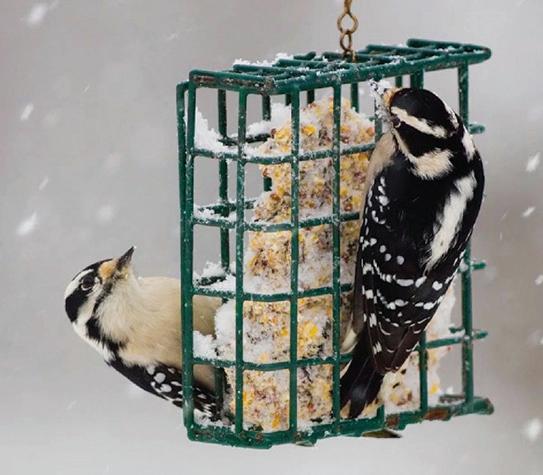
Vines that are strangling trees, such as bittersweet, wisteria, wild grape, poison ivy, Virginia creeper and Japanese honeysuckle, should be cut off and removed during the winter. Don’t forget to feed the birds and see that they have water. Birds like suet, fruit, nuts and breadcrumbs, as well as bird seed. They won’t even complain if the bread is stale.
Remember to recycle your holiday decorations. Greenery used in ornaments can be used again in the garden. Wreaths and branches stripped from Christmas trees make excellent mulch for protecting newly planted ornamentals. Remove the material in the spring and compost it.
You can start seeds of coldhardy and slow developing annual flowers in January or February. These flowers include ageratum, alyssum, baby’s breath, coleus, dusty miller, geraniums, impatiens, marigolds, pansies, perennials, petunia, phlox, portulaca, salvia, sweet pea, snapdragons, vinca and verbena. Make sure that they have enough artificial light to ensure good plant growth.
Happy Gardening!

Marc Teffeau retired as Director of Research and Regulatory Affairs at the American Nursery and Landscape Association in Washington, D.C. He now lives in Georgia with his wife, Linda.


St. Michaels Map and History



On the broad Miles River, with its picturesque tree-lined streets and beautiful harbor, St. Michaels has been a haven for boats plying the Chesapeake and its inlets since the earliest days. Here, some of the handsomest models of the Bay craft, such as canoes, bugeyes, pungys and some famous Baltimore Clippers, were designed and built. The Church, named “St. Michael’s,” was the first building erected (about 1677) and around it clustered the town that took its name.
For a walking tour and more history of the St. Michaels area visit https://tidewatertimes.com/travel-tourism/st-michaels-maryland/.






Fannie Insley by A.M. Foley
Captain Calvert Evans crewed, and later owned, Chesapeake-built boats in the early half of the 1900s. “Cap’n Katz” was born on Elliotts Island and later lived in Vienna and Cambridge, Maryland. This article is based on 1990s interviews in which he offered insight into the men who freighted under sail in those days.
If ever a boat took on the personality of its captain, the schooner Fannie Insley meshed seamlessly with Captain Raymond Evans. Together Cap’n Raymond and Fannie sailed the Chesapeake from 1918 to
1935. Built at Church Creek in 1882, the 78-foot, two-masted Fannie Insley had several owners before Evans and his cousins Alonzo and Alberry Moore bought her. Originally, she sailed amid thousands of

representation of a two-masted schooner
Fannie Insley
schooners, bringing produce from the Bahamas, freighting around the Chesapeake. Ultimately, she outlasted almost all of her kind.
Cap’n Raymond’s cousins, forward-thinking businessmen, must have foreseen the demise of freighting under sail. Others were converting to power, succumbing to dictates of time-scheduling and immunizing themselves against vagaries of the wind. The Moores sold their shares to Cap’n Raymond and he and Fannie sailed on.
Captain’s son, Calvert “Katz” Evans, said he was only too happy to go along with his father. As a youngster, Katz crewed summers on Fannie for ten years before leaving his last year of high school at sixteen to sail full time. As Katz remembered, “Pop said, ‘If you’re not gonna study and try to get through school, you might as well come on here with me.’ That’s all the invitation I wanted. I tell you the truth: I loved it.”
Raymond Evans had learned his trade under Samson Gray at the turn of the former century. Cap’n Sam lived his life on Grays Island, a few isolated acres of high ground amid vast marshes of southern Dorchester County. Cap’n Sam kept bugeyes moored in Fishing Bay off Grays Island. What crew he couldn’t round up among family he recruited a couple miles down -
shore off Elliotts Island. That’s how Raymond began his life on the water, culling oysters for one cent a bushel. Cap’n Sam’s bugeyes were hewn by some of the Chesapeake’s finest boatbuilders, such as Otis Lloyd, known for constantly improving a vessel’s design, incorporating wisdom of oystermen who worked them. Maybe dredging from the finest, most responsive bugeyes in Chesapeake’s oyster fleet ruined Raymond forever for power vessels.
Ashore, Cap’n Raymond never owned nor drove a car. When he bought Fannie , he never used a motor on the push-boat he carried aboard. “I was his Palmer,” Katz joked, referring to one-cylinder engines coming into use. Cap’n Raymond never wanted a hoisting engine to raise Fannie ’s sails either, but eventually he had to give in. Of crewing on Fannie Katz said, “We hoisted by hand. That was a job. Fannie was one of the last ‘hand-pullers’ on the Bay and Pop couldn’t get people who wanted to go aboard of her ’cause everybody else had deck engines. So finally he went down to Whitehaven and put one on, but he wasn’t familiar with mechanical things. He got caught up in the engine and his leg was cut off four inches below the knee.
“Pop was waiting for a man to come from Baltimore and take measurements to make him a leg.














Oxford Map and History
Oxford is one of the oldest towns in Maryland. Although already settled for perhaps 20 years, Oxford marks the year 1683 as its official founding, for in that year Oxford was first named by the Maryland General Assembly as a seaport and was laid out as a town. In 1694, Oxford and a new town called Anne Arundel (now Annapolis) were selected the only ports of entry for the entire Maryland province. Until the American Revolution, Oxford enjoyed prominence as an international shipping center surrounded by wealthy tobacco plantations. Today, Oxford is a charming tree-lined and waterbound village with a population of just over 700 and is still important in boat building and yachting. It has a protected harbor for watermen who harvest oysters, crabs, clams and fish, and for sailors from all over the Bay. For a walking tour and more history visit https://tidewatertimes. com/travel-tourism/oxford-maryland/.
Fannie Insley
It was getting on to two months and his brother, Uncle Albert, knew Pop wanted to get to work. Uncle Albert was an extra-good carpenter. He could do ’most anything in the carpentry line, so he made Pop a peg-leg. If you seen pictures of old sailors, I guess the only way they had to get around was a peg-leg. So Uncle Albert made one for Pop and he’d go up the deck a-flying on that thing.”
Cap’n Raymond was a man of faith but often wasn’t home to attend Elliotts Island Methodist Church. Katz said, “If Pop was in a harbor where they had a church he’d go, but he’d put into the near -




Happy New Year from Mystery Loves Company
Friday - Sunday 10-3, Monday 10-2
*Listen Fri. mornings on WCEI 96.7fm *20% off your book clubs’ books *Books of all kinds & Gifts for Book Lovers *Special orders & Book Gift Baskets *Online ordering & e-newsletter @ www. mysterlovescompany.com

est harbor on Saturday night—and he’d want to get in there before midnight, too. Sunday he’d read his Bible, yes sir. Then he’d put it down and take a nap.
“Irvin Thomas sailed with us— he was a good hand. I think he used to try shaving on a Sunday just to aggravate my father, but Pop wouldn’t even let Irvin shave. I’m telling you the truth. Pop’d say, ‘If you can’t shave before Sunday, you ain’t gonna shave.”
Fannie Insley proved to be as tough as her captain. She absorbed the brunt of the famous August Storm of 1933 and saved a tomato cannery in the process. The August Storm created the Ocean City Inlet, but elsewhere

did vastly more harm than good. When it struck Dorchester County, Fannie was tied up in Vienna alongside Clay Webb’s wharf.
On the Nanticoke River, timber and tomatoes ruled. As woods were cleared, tomato patches were planted. Conveyances from oxcarts to oyster buyboats carried crops to the canneries, which peppered the Nanticoke shore from Elliotts Island to Seaford, Delaware. That August of ’33, Fannie had sailed a load of tomatoes to Webb’s cannery and tied up overnight. Katz was aboard alone when surging tide from the storm came on. The captain had gone ashore and somehow slept trustingly through the night while Katz

The Mid-Shore Community Foundation connects private resources with public needs in order to enhance the quality of life throughout the Mid-Shore Region. We provide tools that enable donors to easily and effectively support the causes they care about - immediately or via bequest. 102 East Dover Street Easton, Maryland 21601 410-820-8175 www.mscf.org

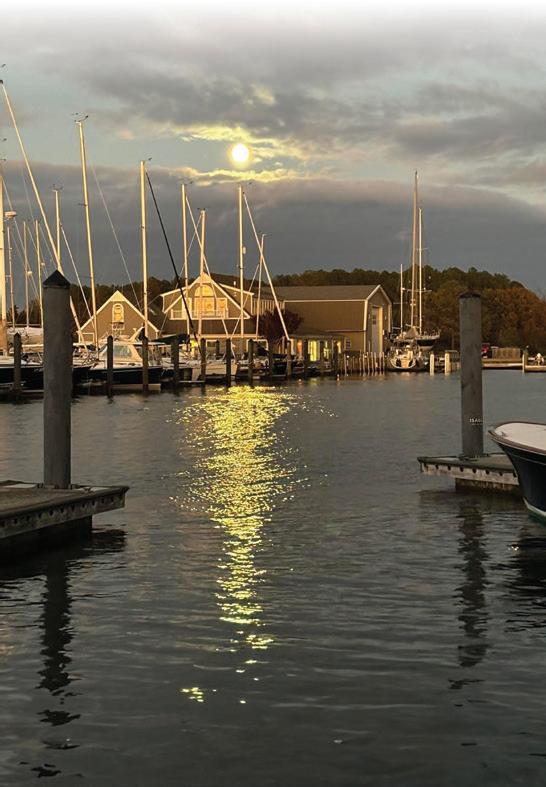

Fannie Insley

struggled: “I was all night putting out new lines. She was breaking lines as soon as I got ’em out. She would hit the side of that wharf and go up in the air. I could feel
those pilings give every time she rolled.
“Clay Webb came down. When he’d got his thoughts together and the tide went down enough so he could come aboard with me, he said, ‘I’m a proud person this boat was here last night. Otherwise, I wouldn’t have no canning factory.’ I said, ‘No sir, you wouldn’t.’
“Pop came down and saw all these tomatoes all over the yard. It begun to dawn on him what’d happened. I told him how high she was and showed him where the copper paint off Fannie had rubbed on the top of the pilings. I told him, ‘Old Fannie ’s pretty good. It didn’t punch no holes in her.’ It all kind of made me think more of her. She
Residential Designs since 1989

was right good and sound.”
Cap’n Raymond’s favorite run was hauling oyster spat to be planted on private beds. A number of his neighbors rented Fishing Bay bottom from Elliotts to Grays Island. Fannie sailing in from Tangier Sound with seed oysters caused quite a stir. Most tongers had converted their heavy, home-hewn sailing “canoes” into sluggish workboats powered by Palmers. Katz described Fannie ’s arrival:
“They came down and met us, sometimes three or four canoes came down, and they tied on behind and came aboard to talk and look at the oysters—see how they were. George Thomas always wanted to steer coming up Fishing Bay. ‘Raymond, let me have her,’ he’d say. That was Pop’s life. He loved running oysters to Fishing Bay. He ran in there a lot. He went down the James River and bought oysters when they were little things called ‘spats.’ When he brought the spats up, he anchored off in Forks Channel and the wa -
termen would meet us in their canoes. We shoveled the oysters off our boat into the canoes ’cause the canoes could go in shallow water. It took all day, the canoes were so slow. The watermen ran the spat onto the oysterbeds and shoveled them overboard and left them about three years. Then they had big oysters ready for market.”
When one of the periodic dieoffs hit the oysters, the end of an era hit the captain. “Poor ol’ Pop,” said Katz, “he just couldn’t make nothing after the oysters died in Fishing Bay. When he was planting them, he was making a little bit of money. Nothing big, but a whole lot better than freighting. When the oysters died, they all gave up planting ’cause it was no use to put ’em overboard—they’d all die. So then he went hard freighting, but by that time there weren’t no work. Poor ol’ Fannie , she was a pretty boat before she started losing her shape, but she never got rebuilt.
“We had one pump on there at first and she got leaking so bad
Fannie Insley

one pump wouldn’t do it. So we put another one on a rocker arm. When the rocker arm came up on one side, it went down on the other. A lot of times Pop drove her hard and it was blowing big seas and both those pumps were going. We could pump some water then. So he used her like that—like to drove him crazy, but he couldn’t do no better. Then he sold her and
come ashore. I used to love that ol’ boat. He did too. Yes indeed, you get attached to ’em.”
The captain was forced to sell in 1935. Four years later Fannie was resold to D’Arcy Grant, a journalist who thought she could make freighting pay. Her article on her idyllic venture appeared in an August 17, 1940 Saturday Evening Post. In September, disliking the aroma of spent oyster shells, she hired a captain to sail a load from the Rappahannock to a Crisfield fertilizer plant. A sudden squall dismasted Fannie , opening her seams and ending her long career. The temporary captain and crew escaped in her push boat. Meanwhile, Cap’n Raymond had gone aboard his son Katz’s freighter.

Forty-some years ago, A.M. Foley swapped the Washington, D.C. business scene for a writing life on Elliott Island, Maryland. Tidewater Times kindly publishes Foley’s musings on regional history and life in general.
QUALITY STROKES PAINTING





Photo by John Cole Photography

Live Your Healthiest Life
Why LYHL—boost your energy levels, improve digestion, enhance mental clarity, support weight management and develop sustainable healthy habits.
What is inflammation? Doctors are learning that one of the best ways to reduce inflammation lies not in the medicine cabinet, but in
the refrigerator. By following an anti-inflammatory diet (Mediterranean Diet), you can fight off inflammation for good.
Base every meal on these. Eat whole, predominantly plant based foods—fruits and veggies, eat dairy moderately, meat and sweets less often. When you fill your plate with

this soothing fare, you’ll begin to calm the angry symptoms that plague you.

1. Shift your mindset. Make conscious choices every day to shed established patterns. While most of us know how to eat well and stay healthy, its often easier said than
A Taste of Italy

done. People with busy lifestyles often put health and fitness on the back burner, but it’s the small daily food and exercise choices that determine successful lifestyle management.
2. Focus on small changes. It’s the daily routine that manages your inflammation over the long term.
3. Make a clear plan. Planning is the key to enjoying long-term lifestyle success. It ensures you are never caught off guard and that you’ll always have healthy options on hand. The benefits of meal planning are that you will save money, keep mealtimes fresh with variety and save more time.

4. Shop once a week or online. Set aside an hour each week to stock up on healthy lifestyle staples or try ordering online if you find it hard or inconvenient to make it to the shops.
5. Know your quick and easy meals. If you have canned beans, tuna or salmon, eggs, cheese, pasta sauce, frozen vegetables, potatoes and tomatoes, you can make five or
six different meals in 10 minutes or less.
6. Set aside 20 minutes on Sunday to plan the week’s meals. Make a note of each dish you plan to prepare so you know exactly what you need to do when you walk in the door.
7. Keep snacks with you at all times. Each morning, pack a couple of protein-rich snack foods to pre-

vent impulse purchases during the day.
8. Always carry a water bottle.
9. Walk 7,000 steps a day and add strength training three times a week.
10. Get to bed early and wake up early. Sleep 7–8 hours a day. Fast for 12 hours between dinner and breakfast and for three hours before bedtime.
Mom’s Granola
This is absolutely delicious! Serve it with fresh fruit and any kind of homemade muffins or sweet rolls— it’s always a favorite! The granola stores excellently in an airtight container for up to 6 months if you can keep it around that long!!!!!!

Tidewater Kitchen

Mix well by hand:
3 cups quick or regular oats
1 cup coconut
1 cup chopped nuts
1/4 cup flaxseed (ground)
2 tablespoons cinnamon
6 tablespoons sesame seeds, optional
1 cup raisins or your favorite dried fruit, chopped into raisin sizes— add after granola cools
Combine together:
1/8 cup expeller pressed canola oil or virgin organic coconut oil
1 cup honey
1 teaspoon vanilla
Add liquid mixture to dry ingredients, stirring completely. Bake at 325 degrees F in a 9 x13-inch pan, stirring every 15 minutes to avoid over-browning. Roast until golden brown, approximately 35–40 min-

utes. Add dried fruit after granola cools. Yield: 6–8 cups.
Creamy Hummus
Hummus is a healthy and convenient dip for vegetables or pita bread. It is a good source of complex carbohydrates, healthy fats

and plant-based protein. Serve it with pita bread, carrots, red onions, grape tomatoes, cucumbers and Kalamata olives for a filling Mediterranean appetizer.
1 (15-ounce) can chickpeas, drained and rinsed
1/4 cup tahini
1 garlic clove
Freshly squeezed juice of 1 lemon
2 tablespoons extra-virgin olive oil
1 teaspoon sea salt
In a blender jar, combine the chickpeas, tahini, garlic, lemon juice, olive oil, and salt. Purée until smooth.
Variation:


Edamame or Roasted Red Pepper Hummus: Add 1 cup of edamame or roughly chopped roasted red peppers to the hummus recipe, and blend until smooth.
Cauliflower Soup
Makes 10 cups; 4–6 servings
This rich soup is vegan, healthy and quick to prepare. It’s good either hot or cold and keeps well if you don’t plan to serve it all at once. If you can find orange cauliflower rather than white, it’s higher content of beta-carotene. Cashew milk makes the soup deliciously creamy. This is a good way to get the antiinflammatory benefit of turmeric.
Home Cooking”
Mon.-Sat.: 6 a.m. to 2 p.m.







Tidewater Kitchen

3/4 cup cashew, soy or almond milk
2 teaspoons organic virgin coconut oil, cold pressed and unrefined
1 medium onion, diced
1 large head cauliflower, cut into 1-inch pieces
1 (14-ounce) can coconut milk
2 tablespoons curry powder
1 teaspoon ground turmeric with ¼ teaspoon black pepper
1 teaspoon ground cumin
1 teaspoon evaporated cane sugar or maple syrup
1/4 teaspoon ground cinnamon
Sea salt to taste
In a large pot, heat the coconut
oil over low heat. Add the onion and sauté until golden. Add the cauliflower, coconut milk, your favorite nondairy milk, curry powder, turmeric, cumin, sugar, cinnamon, and salt as needed. Add enough water to cover.
Bring to a low boil, reduce the heat and simmer until the cauliflower is tender, about 10 minutes. Blend the soup with an immersion blender until the desired consistency is reached. If using a standing blender, allow the mixture to cool for 20 minutes. Pour the soup into the blender. Hold the lid down firmly with a clean, folded towel over it. Start on low speed and blend until the soup is smooth. Return to the pot and reheat if serving hot.
Quick & Easy Stir-fry
You can add your favorite protein if you don’t want chicken or tofu. It gets a bit of a kick from the Sriracha sauce.
4 boneless, skinless chicken thighs, cut into 1/2-inch pieces, or 1/2 pound baked pressed tofu, sliced into 1/2-inch pieces
2 garlic cloves, minced
1/4 teaspoon toasted sesame oil
2 tablespoons grapeseed oil
1/2 yellow onion, thinly sliced
2 cups broccoli florets
2 bell peppers, cut into strips
1/2 cup snap peas
1/2 cup sliced carrots
1 tablespoon fresh ginger, minced








Tidewater Kitchen

2 garlic cloves, minced
1/2 teaspoon sea salt
For the sauce:
2 tablespoons Sriracha sauce
2 tablespoons lime juice
1-1/2 tablespoons low-sodium soy sauce
1 tablespoon grade B maple syrup
2 teaspoons unseasoned rice vinegar
In a medium-size bowl, combine the chicken with the garlic, ginger, salt and sesame oil. Allow to marinate 15 minutes or longer while you are preparing the rest of the dish.
Whisk together the sauce ingredients and set aside.
Add grapeseed oil to a large skillet and heat over medium-high heat. Add chicken and stir-fry for 3 minutes. Add broccoli, bell pepper, and carrots and cook, stirring occasionally, just until tender, about 3 minutes. Add ginger and garlic, cook for an additional minute and add sauce. Cook until the sauce begins to reduce a bit, about 1 minute.
Transfer the stir-fry onto a platter. Garnish with favorite toasted nuts, walnuts, cashews or almonds. Serve over brown rice!
Chocolate Pudding Makes 4–6 servings

This classic favorite is healthier vegan, gluten free and dairy free. Cocoa powder and dark chocolate intensify the pudding’s flavor; this is a good way to enjoy the health benefits of chocolate.
1 cup evaporated cane sugar
1 cup unsweetened natural cocoa powder
1 tablespoon plus 2 teaspoons cornstarch
3 cups plain soy milk
9 ounces 70% or higher organic dark chocolate, coarsely chopped
1 teaspoon vanilla extract & ¼ teaspoon vanilla paste, from a vanilla bean if you have 1/2 teaspoon ground cinnamon 1/3 cup coarsely chopped raw un-

salted favorite nut chopped
Fill a large bowl with ice and water. Set aside.
Combine the sugar, cocoa powder and cornstarch in a saucepan. Whisk in half of the soy milk to create a smooth paste. Add the remaining soy milk and whisk to combine.
Place over medium-high heat. Stirring constantly, bring the mixture to a simmer. Remove from the heat and whisk in the chocolate, vanilla extract, vanilla bean seeds and cinnamon.
Strain the pudding mixture through a fine-mesh sieve into a bowl. Immediately set the bowl in the ice bath to cool down the pudding. Place a piece of plastic wrap


Acupuncture and Natural Health
Acupuncture & Moxibustion · Cupping
Women’s Health · Children’s Health
Homotoxicology · Ion Cleanse Foot Bath
Polyvagal Therapy & Acupuncture
SAAT/Soliman’s Aricular Allergy Treatment
We specialize in a form of acupuncture based upon the teachings of Kiiko Matsumoto and functional medicine principles which result in a wholistic and highly effective treatment for all types of patients.
410.310.3717
933 S. Talbot St., Suite 14
St. Michaels halowholistics.com


Tidewater Kitchen
directly on the pudding’s surface to prevent a skin from forming. Refrigerate for at least 4 hours before serving.
Divide the pudding among four to six 6-ounce bowls or ramekins. Top with nuts or fruit and serve.

Pamela Meredith, formerly Denver’s NBC Channel 9 Children’s Chef, has taught both adult and children’s cooking classes.
For more of Pam’s recipes, visit the Story Archive tab at tidewatertimes.com.






















All Quiet on the Sound A novel by
B. P. Gallagher
Chapter 17:
Black Tuesday
On Tuesday morning, a couple minutes past one, the Higginses were awakened by a knock at their front door. Earl roused from troubled dreams like a drowning man drawn from deep water, uncertain for a moment where he was and what had awoken him. Then he heard it again, knock-knockknock . A thrill of icy fear coursed up and down his spine. Throwing back the covers, he rose from bed
in the dark and padded across the room in his skivvies.
“Hear that, Earl?” said Maggie from outside his bedroom door, sounding as breathless and terrified as he felt.
“I hear it,” he whispered, joining her in the hall.
“Is it the police?”
“How should I know? C’mon. Better go see.”
A third round of knocks echoed through the house, louder and more insistent. Leon, registering

Is your bike ready to ride?

There's nothing better than that first spring ride after a long, cold winter. And there's nothing worse than heading out for your first warm-weather ride and realizing your bike needs some work.
Visit us now thru Feb. 28 and you’ll get:
•$50 off a Level 2 Service Package
•Plus, 50% off suspension & brake bleed
•$100 off a Level 3 Service Package
Your future self will thank you.
*Sale prices available through February 28, 2025 Not

723 Goldsborough St.
the noise at last, burst from his room and crept downstairs with a baseball bat in hand.
“Grab the shotguns outta the gun cabinet, Earl,” he said, wildeyed. “They’re here!”
“Hold on a second! We don’t know who it is yet. And put that down. Are you crazy? We’re not arming ourselves even if it is the cops!”
Leon lowered the bat reluctantly.
“Maggie? Leon?” said a tearful voice from the front stoop. “It’s Clara!”
Leon dropped the bat to the floor with a thud and threw open the door to reveal Clara Gibbs standing on the porch. She was wearing a white cotton shift with her winter coat thrown overtop it and was distraught.
“It’s Pop Pop…” Her lip trembled. “I went by his room to check on him, and I—I think he’s dead!” With a shuddering sob, she buried her face in Leon’s chest. Leon, to his credit, looked only slightly dumbfounded as he drew her into a firm embrace.
They walked next door through a pale shroud of snow, wearing matching ensembles of nightclothes and overcoats. A disquieting stillness lay over the island, an atmosphere native to this time of night and enhanced by the morbid nature of their errand. The Gibbs

Anthony’s
26342 Oxford Road Oxford, MD 21654
410-226-1118
With a steadfast commitment to his craft, Chef Anthony Guessregen has devoted 49 years to the culinary arts. His journey began in the bustling kitchens of New York’s finest restaurants, where he honed his skills and nurtured his profound love for cooking.
Anthony’s culinary style is a reflection of his diverse experiences, blending the richness of his New York roots with the tranquility of his Maryland haven. Each dish is imbued with his unwavering dedication and passion for flavors that tell a story.
Now serving Brunch Sunday’s 10 a.m. -2 p.m.
Weekly Specials
Wednesday Nights
Burger & Crispy Fries $16.95
Steak (petite filets) & Pom Frites $22.95 ½ Price first glass of Wine
Friday Nights
Diamond Cut Prime Rib (for two) $85.95
Served w/ Twice Baked Potato, Veg & Bottle of House Red
All Quiet
house stood dark and quiet as a tomb.
As reported, Geezer Gibbs was quite dead. He lay in perfect repose, unbreathing and unblinking, his passing recent enough that the waxen pallor of death had not yet crawled over his cooling flesh. Earl paused in the doorway of the old man’s bedroom, and for the barest instant he was standing outside the room in which his father had died. Leon slept up there now. The memory passed, and he forced himself to approach the old waterman’s deathbed.
“Gotta take him to the Shore come morning for funerary prepa-

rations,” said Leon, face drawn and gray. Likely recalling Pop’s death, like Earl.
“Where to?” asked Earl. They spoke quietly, not to be overheard by the girls in the other room. Clara couldn’t bring herself to look at the body, so Maggie was keeping her company in the den while Earl and Leon attended to the deceased.
“McKinney’s, probably. He woulda made the arrangements in advance, like Pop did.”
“Yeah,” said Earl, recalling his conversation with Mr. Gibbs a few weeks prior. “He said something to that effect.” Dropping his voice lower still, he whispered, “I guess we’ll just… load him into the bed of the truck?”






“What, you wanna ride with him in the cabin?”
Earl conceded the point. “We’ve got ’til low tide to think on it, anyhow,” he added. Leon shivered. “What do we do with him ’til then?”
They shut the door to Mr. Gibbs’s bedroom behind them and rejoined the girls in the sitting room. Maggie suggested heading home for hot drinks and a warm fire—and to be away from the body until dawn, when the tide would recede and daylight might make less daunting the task before them. They sat vigil in the Higginses’ den, clutching little-touched mugs of coffee and trying not to give the appearance of listening to Clara’s mournful sniffles.
At first light, Earl and Leon dressed and went next door. It had only been a few hours, but Mr. Gibbs seemed to have shrunk in that time, his facial features tautened to an expression of belated disgruntlement at the indignity of his passing. All men great and small void themselves in the end.
With a tearful Clara hovering in the hall, the Higgins brothers shrouded the dead waterman in a bedsheet. Then they lifted and carried him between them with as much reverence as they could manage from the bedroom to the driveway, where Betsy idled.
“She’s gotta come along,” said Earl to Leon in the drive. The girls


lingered on the porch, Clara clinging to the railing as if to keep from collapsing. “She’s his next of kin.”
“You sure? She don’t look so steady right now.”
“I know she don’t, and I’m sorry for that. But I don’t think driving up the Shore with a corpse in the back of the truck is the best look for us right now, do you?”
“S’pose not. But is her coming along gonna make it any better?”
“She can vouch we ain’t graverobbers, at least. Or worse, elderkillers. Want me to tell her, or you?” said Earl. Leon went to convey the request.
The drive to the funeral home was itself dirge-like, prolonged and slow. With Clara in the car, Leon would not be unmanned by letting Earl take the wheel. Earl instead spent the drive watching out the rear windshield. He winced each time Betsy struck a pothole and Mr. Gibbs’s body jolted in the truck bed.
Virgil McKinney, for one, seemed delighted to receive the late Mr. Gibbs as a client. Even the doormat to the home, which read ‘We’ve been expecting you!’ evinced a jarringly welcoming atmosphere. Earl couldn’t decide whether it was intended as irony or not.
“Only a few hours gone, you say?” said Mr. McKinney, ushering
a pair of gangly, gurney-bearing sons out the door past him. “Oh, my dear, I am so dreadfully sorry for your loss. We’ll start work on him right away, Ms. Gibbs, right away. I assure you the modern embalming process is most dignified—very efficient, very cleanly, even. You needn’t worry over anything at all, only await the final result.”
The gangly gurney-men shuttled Mr. Gibbs inside and down a sterile hall on the right. The venerable Mr. McKinney led his living charges left, into a musty sitting room— upholstered in maroon velvet, for some inscrutable reason—that adjoined the business office.
“Erm, relations only in the rear office, I must insist,” said the mortician. He ushered Clara inside and shut the door behind them. As the door clicked shut, Mr. McKinney could be heard to inquire, “Now, Ms. Gibbs, I understand this must be very hard for you, but is there any chance you could gather your living relatives by, say, tomorrow? Your grandfather expressed his advance wishes to be interred without delay. If you need to use the telephone, or telegram—”
“Death’s a cold business,” said Leon when they were alone together in the sitting room. Earl had to agree.
Clara reemerged from the mortuary office some twenty minutes later, eyes red-rimmed. In her left
hand she clutched a sodden handkerchief, in her right a sheaf of papers. The latter was only marginally less tear-stained than the former. If the office’s rotary phone or telegram had been put to use in making the necessary arrangements, the communiques must have been brief—or Clara’s living relations few.
Virgil McKinney swept them from the sitting room a moment later with many murmured condolences and repeated reassurances that Clara’s grandfather was in good hands. Work would begin posthaste, he said. Indeed, the double-doors to the sterile rear hall were shutting behind them before they’d even exited the home.


Posted above the door on the way out, in grandiose cursive and, by Earl’s estimation, grotesque humor, was a placard etched: See you next life!
Maybe the mortuary business obliged one to a grim sense of irony.
The living returned to Moore Island before the tide seeped back in. Enroute, they stopped by Moose Hannon’s service station to refuel Betsy and use Moose’s phone to call out at the marina and cannery. Then the day’s other work began.
Even the island’s spongy earth grew stubborn in winter, making gravedigging an arduous task. So, Earl and Leon assembled a small crew out of the men on hand and
























set to in the cemetery with picks and shovels, working in shifts. By mid-afternoon they’d carved a respectable divot from the unyielding ground.
By nightfall, word of Mr. Gibbs’s death had spread among the islanders, passed along by the gravediggers to their spouses and fellow watermen on the docks. At dinnertime, a steady procession of neighbors appeared bearing steaming crockery in oven-mitted hands, which they deposited upon Clara’s front porch. Some visitors were briefly admitted, ushered into and out of the house by Maggie to offer their condolences to the bereaved.


Others were thanked for their contributions and told gently but firmly that Clara wanted privacy during this most difficult of times.
Maggie also took it upon herself to organize the accumulation of piping-hot dishes in the kitchen. The Higgins brothers helped themselves to the food at Clara’s insistence. Clara didn’t seem likely to eat it herself, after all, and gravedigging was hard work.
Geezer Gibbs— Robert Gibbs, Earl had to frequently correct himself now the man was dead enough to accord such respect—died on a dark Tuesday and was buried on a gloomy Wednesday. Shortly after dawn, a sleek black hearse bore Mr. Gibbs one final time across the
C. ALBERT MATTHEWS
Where Integrity Meets Innovation INC.


Moore Island land bridge, cutting through the morning mists like a phantom ship on the River Styx. A modest processional of automobiles and horse carts accompanied him to his final resting place, their passengers bedecked in funeral black. Bunky Hodges and Moose Hannon were among them, their businesses shuttered for the morning in observance of the funeral, along with a few faces Earl didn’t know.
One such stranger was the mainland minister who would be eulogizing the old waterman. Pastor Calhoun’s replacement, Earl presumed. Earl watched with cu-
riosity and vague unease as the young pastor shepherded his flock of mourners into the busy country cemetery. The outsider wove on narrow legs through the headstones, his Bible held out before him as though drawing him on a leash to the fresh pile of disturbed earth on the graveyard’s far side. He had a pimply, fresh-from-seminary look about him, an oiliness all his own. But it was the honest grease of youth, not the sly, slick luster that had coated his predecessor like snail slime. Time would tell if this one oozed also.
The pallbearers, Earl and Leon among them, hoisted the coffin from the hearse and bore it to the graveside. In a reedy but













































































impassioned voice the youthful minister delivered his sermon, an impersonal sendoff to a man he’d never known. The eulogy ended, followed by a brief prayer. Clara sobbed as the coffin was lowered into the ground. Leon and Maggie took turns comforting her while Earl stood beside them, eyes downcast. Two dozen or so others gathered around.
At the rear of the assembly, a lone man in a wide-brimmed hat studied proceedings with a baleful gaze. But when the time came to fill the grave, the watcher was gone. The eulogist departed next, mourners filing away after him.
All told, the graveside proceedings were over with before the tide came back in.
When the mourners had departed, even Clara led away by Maggie, the gravediggers stayed behind to finish the task begun yesterday. Within the hour, Robert Gibbs was interred beneath the island where he had lived out his days, laid to rest among generations of Gibbs with his wife and daughter near at hand. Shoveling loamy soil onto the lid of the coffin beneath a clouded gray sky, Earl tried his best to honor the deceased in his thoughts. But restless memories tugged at him with each shovelful, beckoning him unbidden to another cold, dim morning long ago...









Discover the ultimate waterfront living experience on picturesque Long Haul Creek/ Miles River. This private residence just minutes from historic downtown St. Michaels, offers a perfect blend of tranquility, natural beauty and convenience. Providing 933 ft. of water frontage with panoramic views and a deep-water pier (8 MLW) with boat lift. This spacious property includes five bedrooms, four baths, and an additional guest house, all set on 12.5 acres. Proximity to local amenities includes: The prestigious Links at Perry Cabin golf course and The Miles River Yacht Club. Contact us today for a private tour and make your dreams a reality! Offered at: $3,300,000



All Quiet
Mom’s final rites had been brief and austere, a graveside vigil in this very cemetery. Most of the congregation made an appearance, thirty or so folks in total. By local standards, a crowded turnout despite the ill weather. Earl had wondered bitterly at the time how many attended in honest grief and how many out of morbid curiosity at the inherent drama of the episode. Many of the Calhoun clan were among the mourners and gawkers, including a young Tyler Calhoun, and presiding over them all, the bastard-pasturd himself. A spidery entity all of limbs, scuttling onto the island with his flock
in his wake like a horde of spiderlings in webs of black lace. Peter Calhoun—hitherto a malingering pestilence; thereafter, a malevolent villain.
The Higginses, bereaved husband and children, stood frozen at the graveside, carved from brackish ice. Neighbors gathered around them, keeping a respectable distance but comforting with their presence. Robert Gibbs laid his hand on Pop’s shoulder as they waited for the preacher and his entourage to arrive, and Pop wept.
Earl’s eyes too were bleary with tears, and Leon’s usually comforting stoicism—mask or no—had collapsed into misery etched in stone.
Earl remembered worrying his




AND DAVID B. COLE BLUES BAND








big brother might never smile again, worrying the same for himself. Maggie’s age had shielded her from fully comprehending the tragedy, but she’d known something was irreparably awry, that Mom wouldn’t be returning from wherever she’d gone. Halfway through Pastor Calhoun’s reading from the book of Psalms, she’d sat on the muddy ground and begun to cry. Pop had made no move to quiet her, stricken too by the words.
Standing over Mom’s mahogany coffin—its procurement from the mainland fastidiously pre-arranged, like most material aspects of her final affairs—Pastor Calhoun read next from the Book of Job. A strange selection, Earl had thought at the time, and him no theologian. Now the memory only smacked of cruelty.
“And he—that is, Job—said, ‘Naked I came forth from my mother’s womb, and naked shall I depart!’” said the preacher in portentous tones, “The Lord gave, and the Lord has taken away—blessed be the name of the Lord!”
A smattering of ‘amens,’ more or less enthused. More or less confused. Some saw where this was going; some, perhaps, even approved. Earl and Leon, no great Biblical literates, did not see the case the Pastor was constructing with his incisive passages, his
rhetorical jabs delivered under the guise of eulogy. Maybe Pop did, now Earl recalled it through the lens of years.
The old man—not so old, but so much older than he’d been a year and four days or even three days ago—rocked on his heels, moaning under his breath, powerless to break the pulpit’s hold over country folk even to defend his dearly departed beloved. And as the eulogist invoked Paul’s first letter to the Corinthians, speaking of the body as a temple purchased at cost, Pop let out a shuddering sigh like he must have when the first artillery shells burst over his foxhole in the Great War.
Yet no one interrupted as Pastor Calhoun continued, “Elisabeth Anne Higgins was a child of God, given by God, unto God. Truly it is a shame she will not achieve the pearly gates of Heaven. But may Christ our Lord and God the Father have mercy upon her soul—however she chose to depart this life.”
Some memories are like flashbulb photographs. Others sear the brain like a brand. Earl would never forget how his father’s face crumpled at hearing those words spoken at his wife’s graveside. Eternal condemnation, announced to family members and neighbors alike by this spindly doomsayer. An irrevocable stamp of damnation atop an unconscionable tragedy. Pop seemed to shrink, and Pas -


tor Calhoun to swell, the preacher’s angular shadow looming over the tiny congregation like an ironwrought cross.
The Great War had turned Eldridge Higgins into a hard man, admirable in some ways and loathsome in others. Likewise, Earl’s love for Pop had been complicated and sometimes turbulent. Yet seeing the unutterable pain on the old man’s features that day, he had never wanted so badly to throttle a person as Pastor Calhoun. Leon beside him, as impetuous and tempestuous a boy there ever was, had balled his fists and strode forth to do so.

Given the chance, Earl believed his big brother would have tried to expel the abominable serpent from the island by force like St. Patrick. Perhaps Earl would’ve joined in, too. But Pop had restrained them by the scruff of their collars, and though there were gasps, quickly stifled, from the funeral-goers, none dared dissent with the pastor’s dire pronouncement.
That was the day Earl Higgins lost his faith. Snuffed out, just like that. Not that it had blazed in him before that, god’s honest truth. Religion’s effects upon his mother had been deleterious, even before she gave herself to the Sound. And Pastor Calhoun, proud herald of the ruinous tidings that had infect-

ed her paranoid mind in the wake of Shane’s and her unnamed stillborn’s deaths, had withdrawn even his feverish counsel at the end. For the sake of…what, some sort of sick, posthumous power play?
Burn in hellfire, Peter Calhoun, and good riddance. May the mud bury your miserable memory so deep, even the sulfur stink of your decay can’t escape.
“That oughta do it,” said Leon, summoning him back to the present.
Earl shook himself, glanced down at the shovel in his blistered hands. A mound of loose earth covered Mr. Gibbs’s grave, to which Earl had been mechanically adding for the better part of… however long. He’d been too lost in thought to tell. In that time,s he had sweated through his shirtsleeves despite the chill. Tamping down the mounded dirt with the flats of their shovels, the gravediggers bowed their heads once more in reverence, then headed home to raise toasts in Robert Gibbs’s memory. Winter weather and the settling soils of Moore Island itself would finish the job of sealing his grave.

Brendan Gallagher is a 2013 graduate of Easton High School and is currently finishing up a Ph.D. in Social-Personality Psychology at the University at Albany.


Monday-Saturday 10:30-5:30


Changes: In the Middle of Nowhere
Up the creek with a paddle - in the Arctic (Part 2 of 3)
by Roger Vaughan
Summer 1988:
All the walking hurt our speed. In seven hours on the river, we had only made 14 miles. Hoyt mentioned we were well behind what Osgood had made the first day. Lawrence Osgood in a kayak, with Donald and Maria Scott in a canoe, had paddled the entire Horton River in the summer of 1975. Theirs is one of the few parties to have “done” the Horton. Osgood and the Scotts had nearly come to grief at the Horton Delta when they found pack ice jammed against the shore for the first time in 40 years. They were unable to get to their rendezvous with a bush plane. By luck, an oil company helicopter spotted them and took them out. Hoyt’s remark about being behind Osgood was dropped casually, but it revealed the uncomfortable possibility that our trip was a competition. We were a harmonious group. All of us agreed that one of Hoyt’s major talents was putting people together. None of us was acquainted
with more than one other person at the outset, yet we had quickly come together as a smooth-functioning unit. Hoyt had written a rotating job list for the trip that proved unnecessary. Each man gravitated toward what he could do and then did it with gusto.
Everyone had to pitch in because the routine was difficult and timeconsuming. Daily, it took the better part of three hours to get up, gather firewood, cook, strike tents and pack personal gear, clean up breakfast, pack food and supplies and load the canoes. It was the same scene in reverse. In at 7 p.m., we wouldn’t be at leisure until after 10.
Compatibility is a prerequisite for successful living in the wilderness. Whenever survival is a factor, pettiness is intolerable. I’m sure we all understood that and made extra effort. But I suspect it wasn’t much extra effort. Our average age was 41, our average sense of humor was strong and none of us was shy, which made for good repartee and
lively discussions. We argued, we disagreed, we roasted one another’s career choices, but the Arctic vastness reduced even the most sensitive subjects to so much human babble. We always came out of discussions laughing. Either that or Fred would break out his $12 water-resistant guitar and sing his most requested song, “Never Eat Leftover Lizard.”
After four days, we were all wondering what had happened in the world. Four days with no newspapers. No sports, no politics. We had a radio for confirming the prearranged early departure of Doc and Jim but had agreed not to use it otherwise.
After four days, we were all wondering what had happened in the world.
“Is Reagan still cutting brush in California?” Hoyt wondered. “Are they still trucking in brush for him to cut?”
We were losing touch, and the isolation was welcome. When Steve joked about how Hoyt was mangling the salami instead of slicing it, Hoyt stopped, laughed and said, “Dammit, I’ll do it the way I want. That’s why we are here, so we can do it when we want, how we want, with no one telling us how to do it.”
We were losing touch with our self-images, too. Without a mirror (not one among us), one quickly forgets his looks. My beard felt bushy. My hands had become dirty claws,
cut and swollen. Sponge bathing in the icy water took courage, and the results weren’t satisfying. Most of all, I missed chairs. Without chairs, we squatted to cook, wash dishes, brush our teeth, eat, talk. Squatting is tough on the knees. I didn’t miss the news, though. In my notebook I wrote, “To hell with Jim and Tammy Bakker, Ollie North, the insane stock market, the Middle East, terrorism, yuppies, the latest frozen dessert, and the new muffler for my El Camino. Right now, all that matters are the eagle feathers Eric found, the lichenous rocks I took from a high hill, and the big, cloven-hoof animal tracks I saw 100 feet from our tent.”
Jim came running back to camp after one postbreakfast constitutional saying there was a caribou on the beach. All eight of us took off in our best wilderness tracking manner, tiptoeing over a small hill to approach downwind, keeping quiet, going slowly. The caribou was a goodsized animal with a handsome rack of antlers, lying on the rocky beach like a Miami tourist, facing away from us, chewing. We got fairly close before he sensed us and got to his feet. He assumed a stately pose and stared at us for several minutes.
Even when he got our scent, he didn’t panic. He stretched like a

At Londonderry on the Tred Avon, the Eastern Shore’s only 62+ cooperative community, our residents embrace a maintenance-free lifestyle, surrounded by stunning waterfront views and endless opportunities for fun and connection. From strolling along our beautiful walking paths to enjoying farm-to-table dining. At Londonderry, your retirement is designed to bring joy into your everyday routine—dancing included! Call the Sales and Marketing Team today at 410.820.8732. Your best dance is yet to come at Londonderry. “I

dog, extending his forelegs and arching his back. Then, with a few graceful strides, he sauntered off down the beach.
This was encouraging. We had hoped to see many animals. Osgood had written about huge caribou herds passing close to his camp. Ingmar Remmler had seen dozens of musk oxen just the previous week. That day on the river, we were even more alert. But there was nothing but hills rolling up and away from the river; round mounds of greenish rocky tundra scattered with black spruce, and skinny trees no more than 20 feet tall, the tallest among them perhaps 200 years old.
the distinct feeling that we were being watched. I began to imagine our group as explorers on a strange planet, drifting farther and farther into some fiendish trap without knowing it, being constantly watched by alien beings. The birds were scouts, reporting our every move. Part of the feeling came from the immensity of the landscape, empty and broad once above the riverbanks. It was such an overwhelming scale of open space.
After five days on the river, I had the distinct feeling that we were being watched.
All Arctic plants are miniature, bonsaied naturally by their six-week growing season, by the ice, the crippling temperatures and the brutal winds of the long dark winter. Annual growth rings are microscopic, hard won.
The hills were deceiving. Once, after lunch, we climbed to better assess our position on the river. We climbed 400 feet to an apparent ridge to discover that after a dip, there was another ridge hidden behind the first, and another behind that. We kept going for many ridges, but we never did reach the “top.”
After five days on the river, I had
Part of it came from the deathly silence. On windless days, we would sometimes let the canoes drift, remaining still, and quickly merge into it. Even bird sounds seemed to be sucked into a vacuum of silence so intense you could hear the whoosh of blood in your veins.
Part of it was the absence of any human sign. The most common human sign is trash, and there was none—not can nor bottle, gallon jug nor discarded tire. After straining several hours to see animals, we begin to conjure things. I began spotting tires on the shore, or jugs and boxes. But they were always rocks. The expectation is ingrained: even in mid-ocean (even in space) there is trash.
Then I began seeing figures, sometimes people, standing on the ridges. Once it was a bear, standing erect, motionless. Out of the corner









of my eye, the images would give me a start. Several times I went to the binoculars to be sure they were only trees.
One of our campsites was in an area where 50-foot rock walls rose from the river bed on either side of our flat spot. After dinner, I walked a thousand yards downriver. On the way, I encountered a lesser sandpiper, a small, wellgroomed, nervous bird that flips its tail when perturbed. It scolded with its full range of sounds as it walked along with me, 10 feet away, giving me a hard time. I felt like an intruder, like the time I walked through Spanish

January is a fine time for playing board games

Harlem in Manhattan on a hot summer day, the guest of a young man from the neighborhood. You’ll see a lot going on, my friend had told me. Don’t pay much attention. It’s none of your business. Just keep to yourself and keep walking, and you’ll be left alone. I ignored the piper. I knew I was in a tough, exclusive neighborhood.
There were many caribou tracks in the soft mud beneath the rock wall. I backed off, looked up at the wall and saw them—100 ravaged faces sculpted into the limestone as if by a mad giant using bulldozer blades for chisels. The faces were abstract, cubist, by Duchamp or Picasso; hard-edged ancients of a hundred thousand dark winters. A chill moved up my spine. To be in the arctic in summer is to constantly try to imagine what the winter must be like: 40 to 60 below, windchill 140 below zero, eternal darkness. The natives have a word for it: ilira, the fear that accompanies awe.
Arctic Dream No. 1: The floor of our tent opened. Eric and I fell through the darkness into the Arctic underworld, where the ancients of the rock wall were holding court.

Vaughan.roger@gmail.com






TRED AVON RIVER
Private 4250 sq. ft. four bedroom home overlooking a sheltered cove on the Tred Avon River with quick access to Oxford the Choptank and the Bay. Deepwater pier. Riprapped shoreline. This handsome home features a large first story bedroom with walk-in closet. Glassed, screened and open porches take advantage of the setting. Available furnished. $2,625,000.




